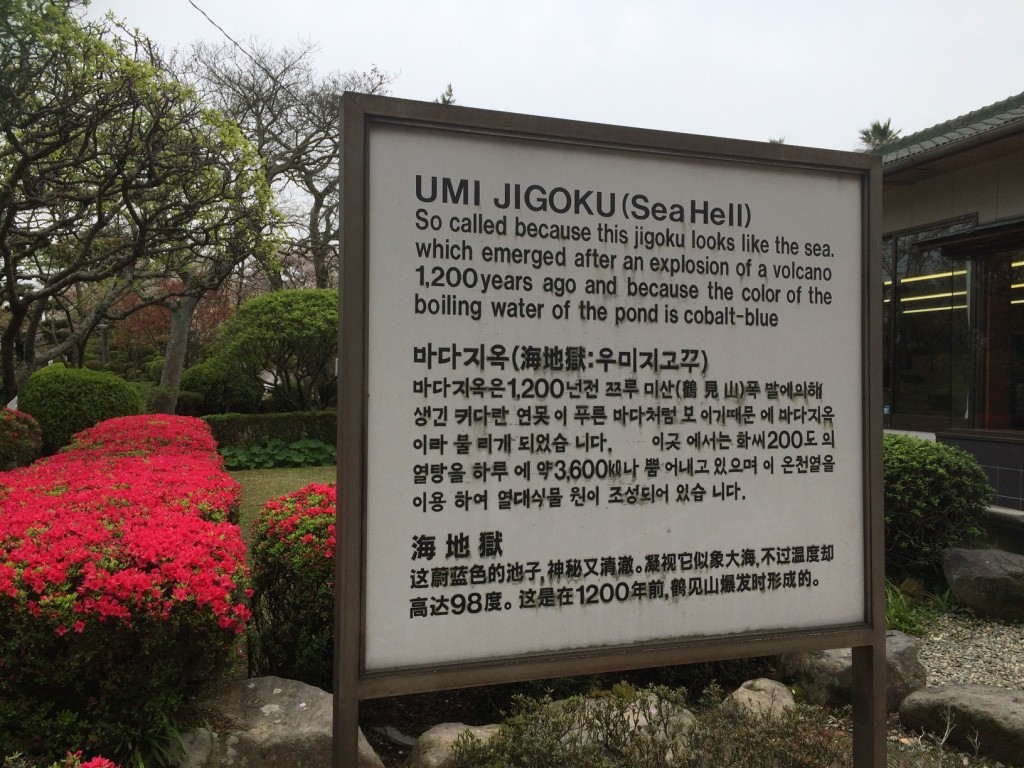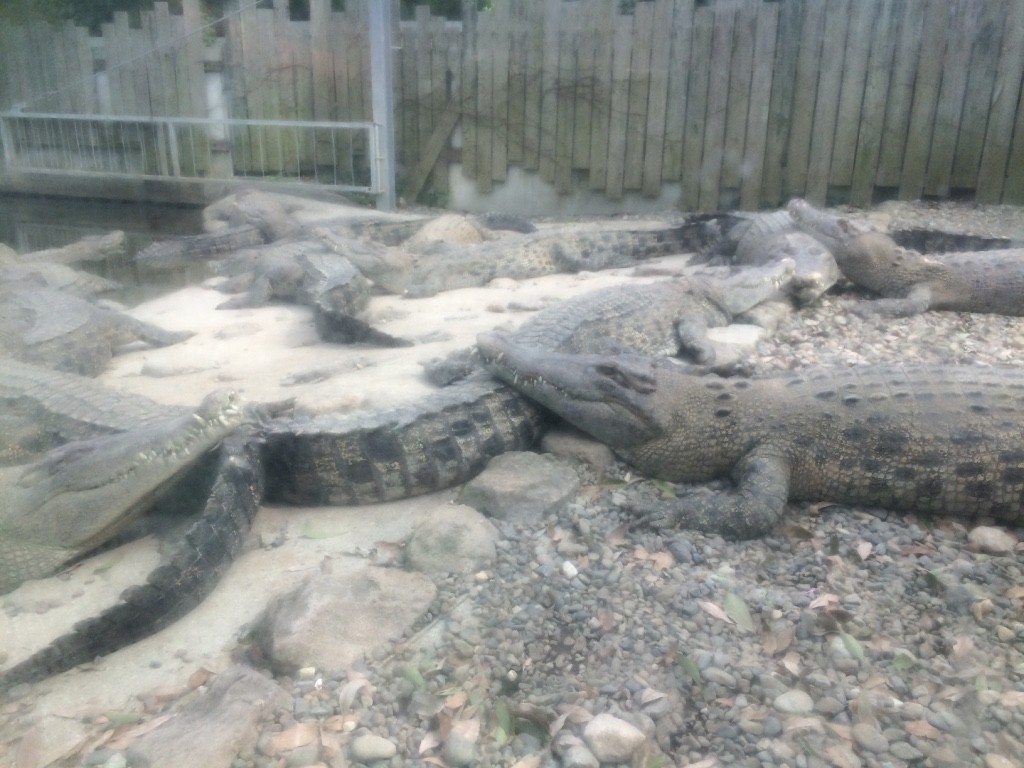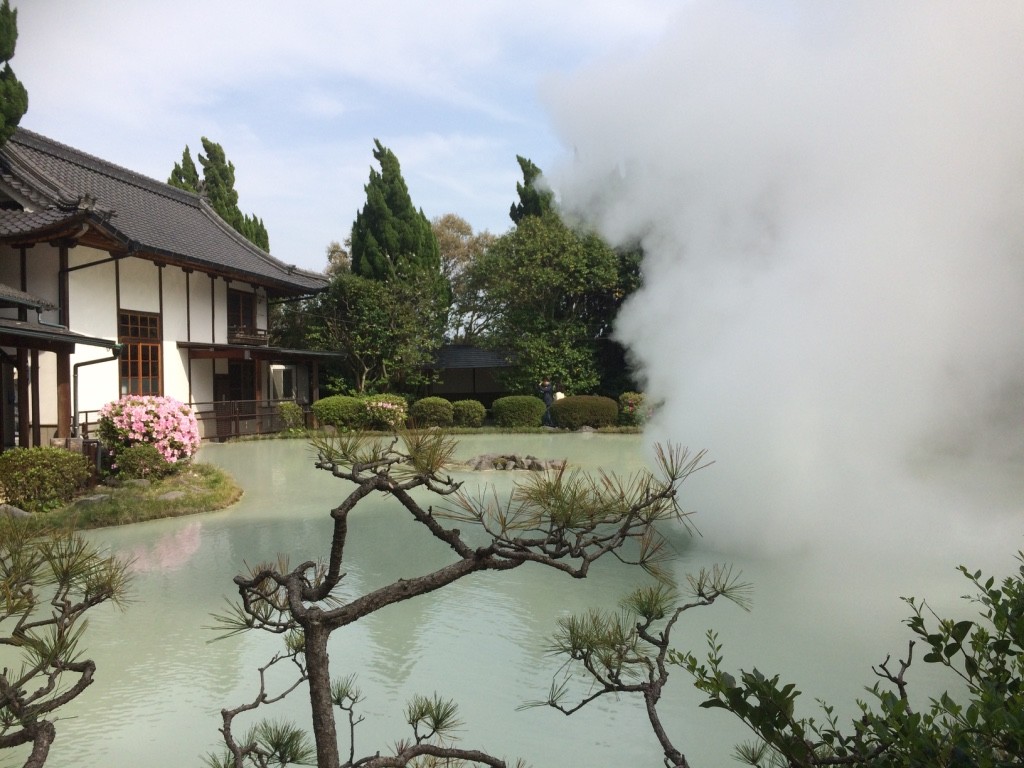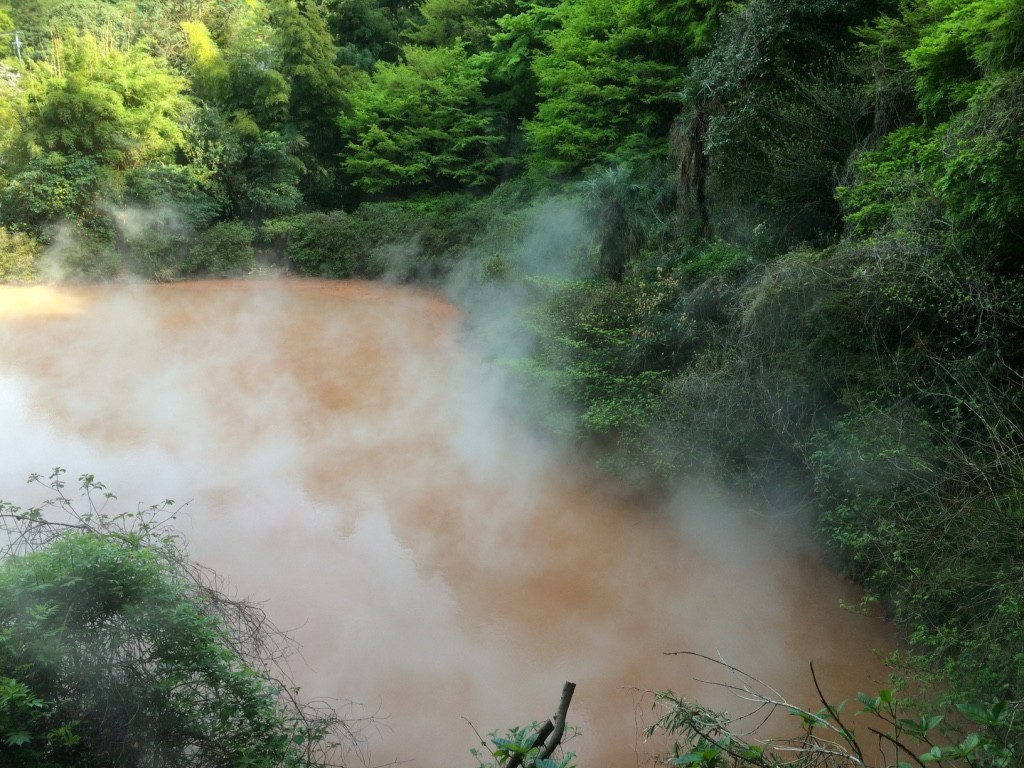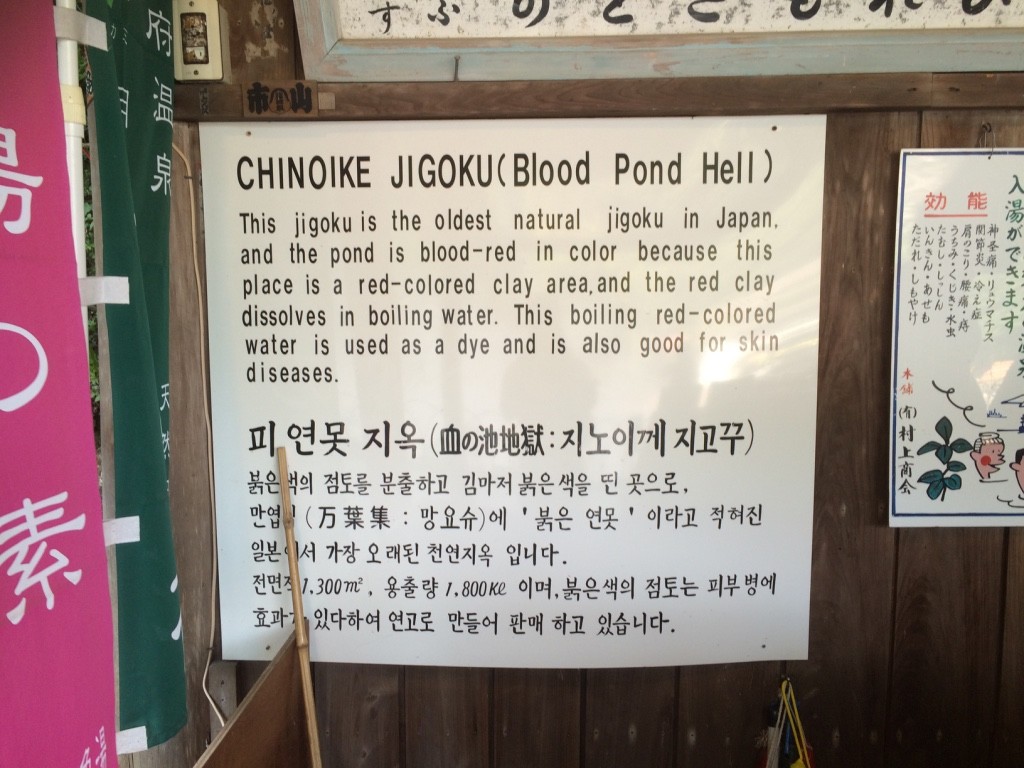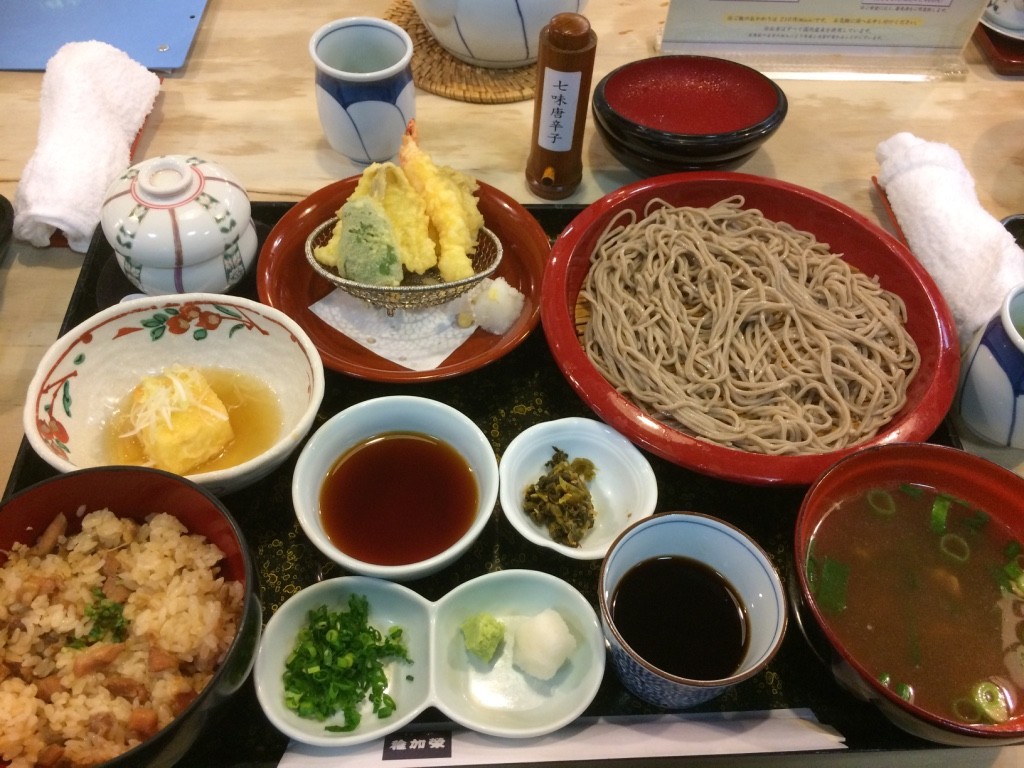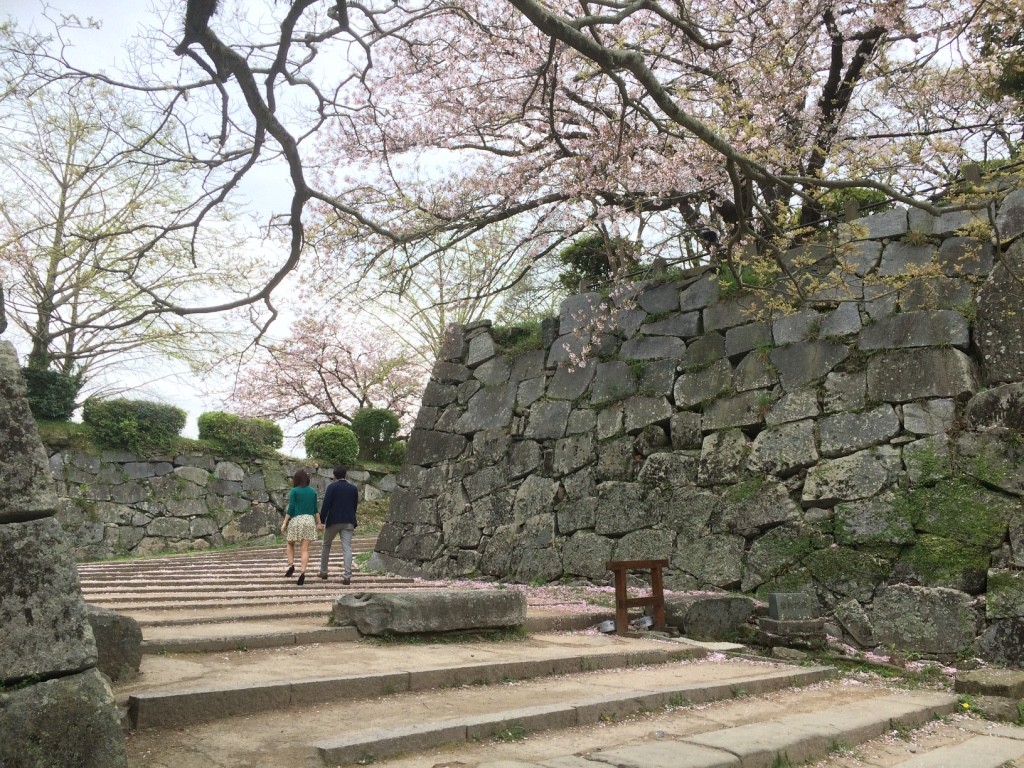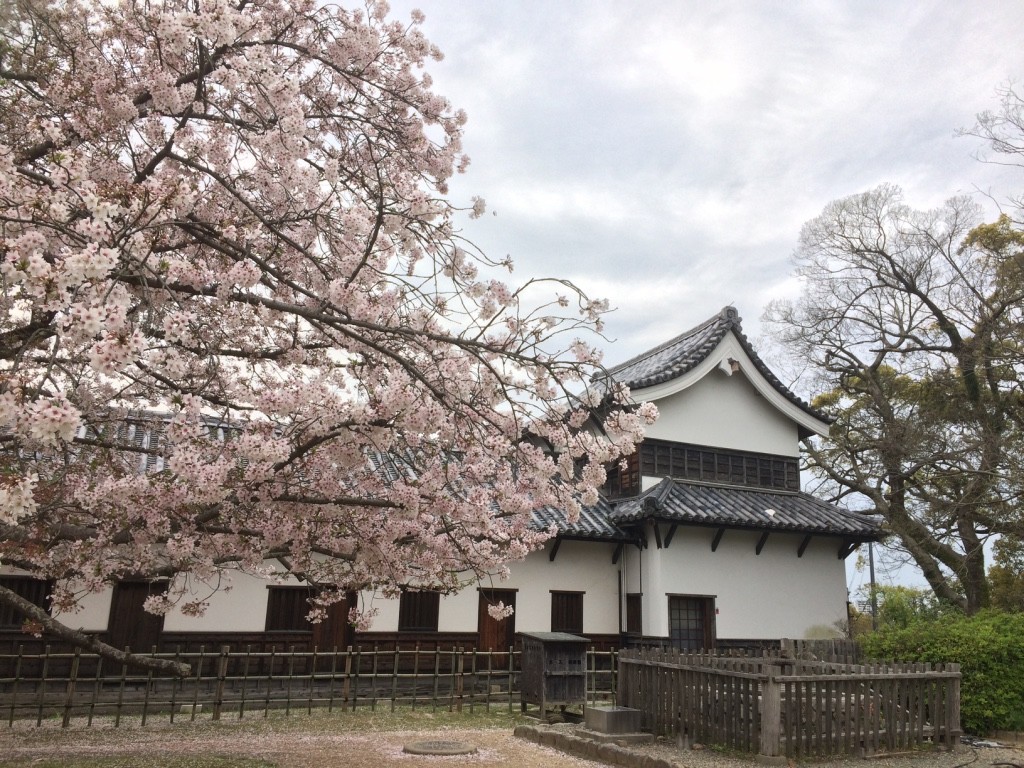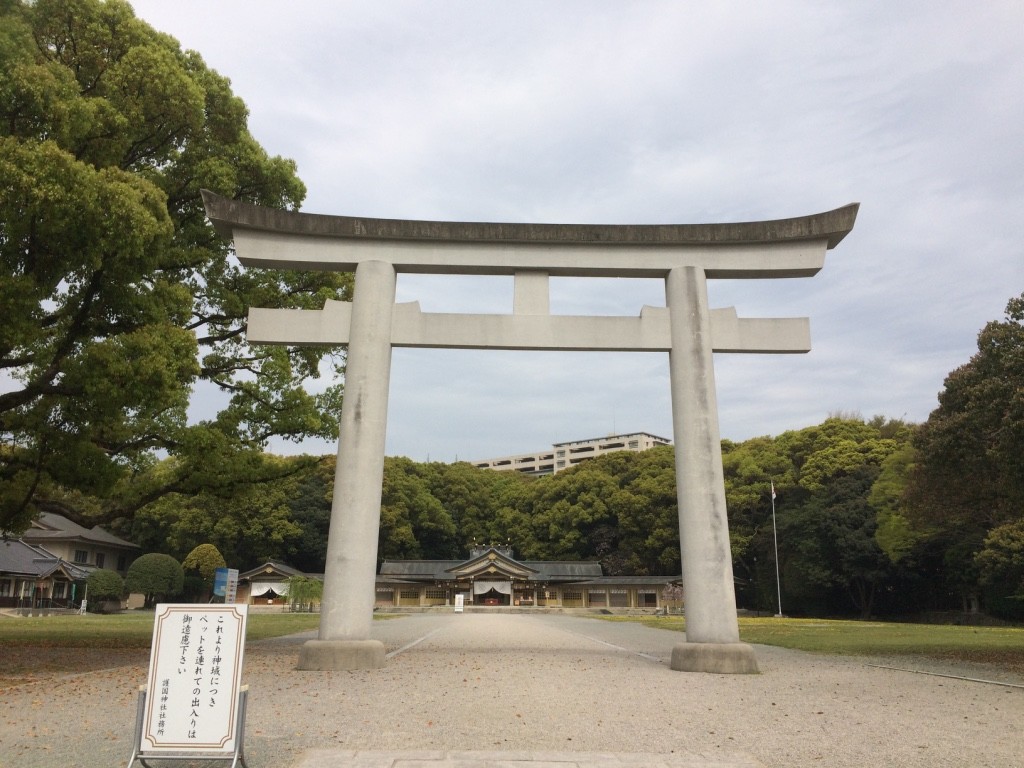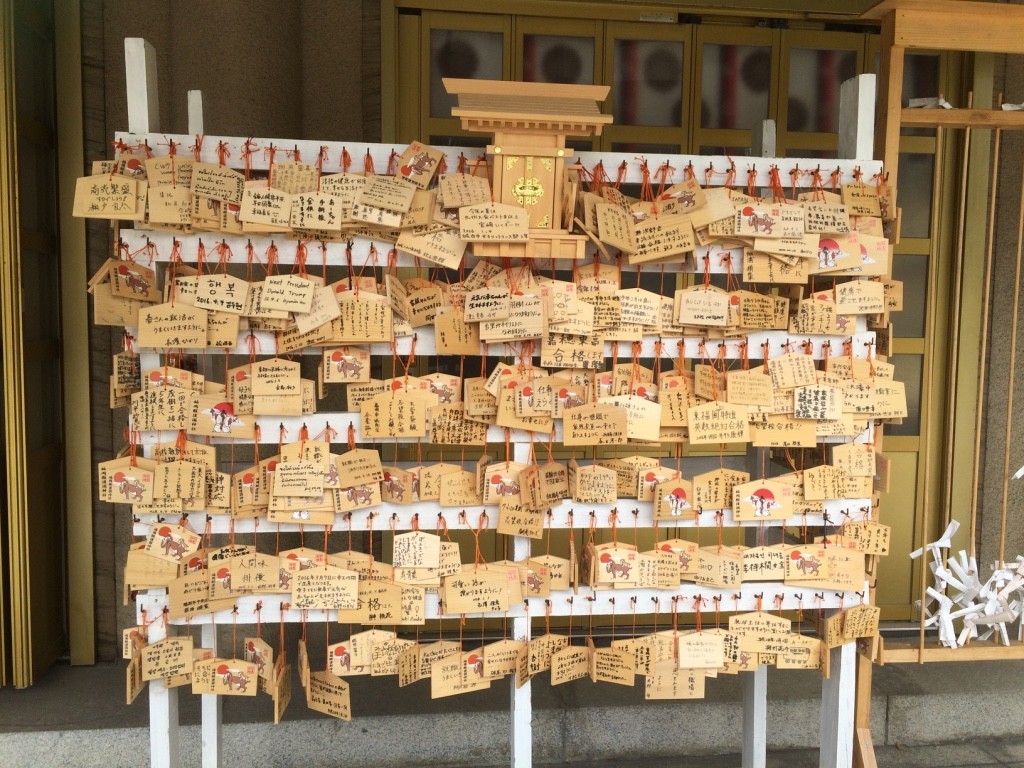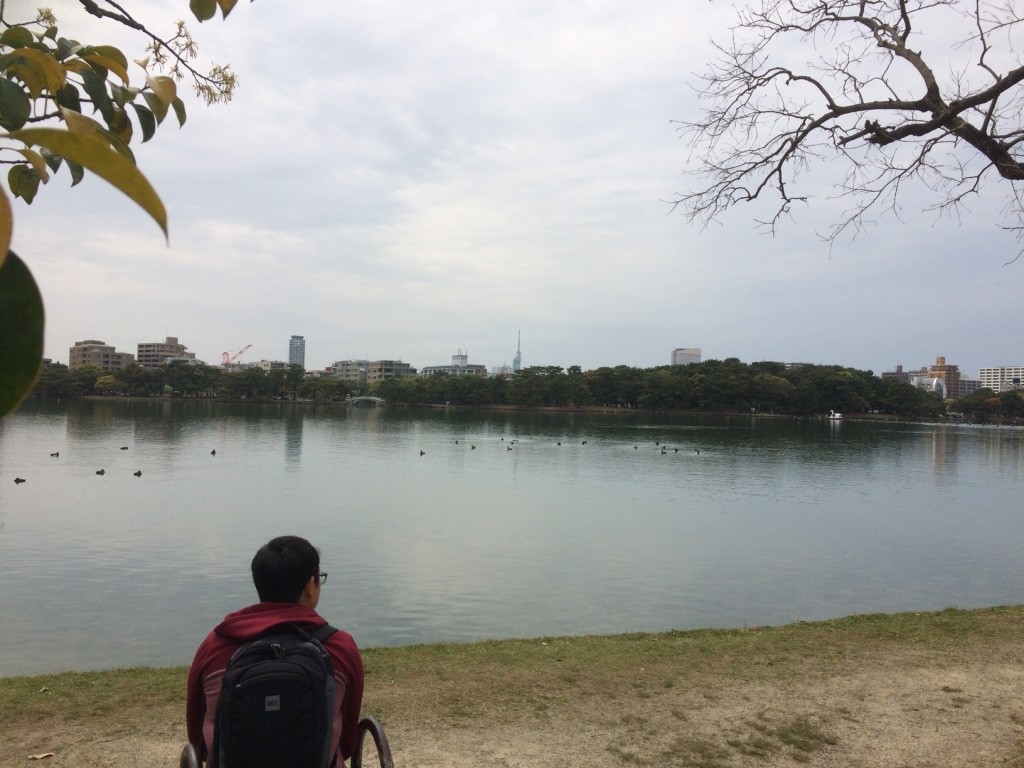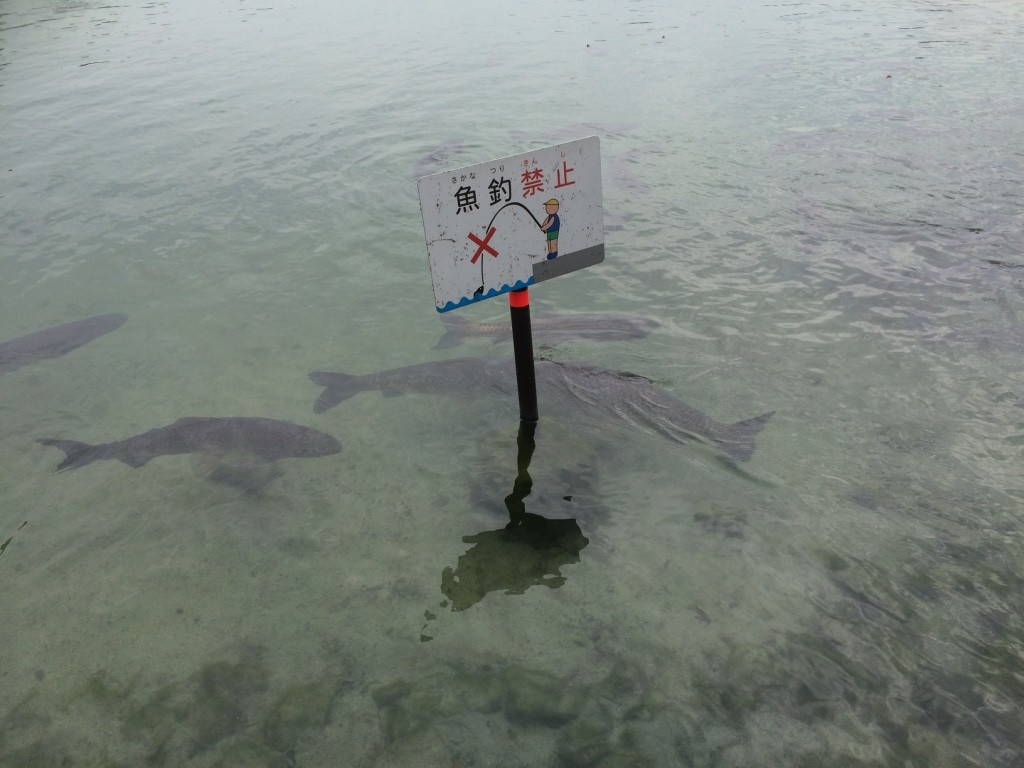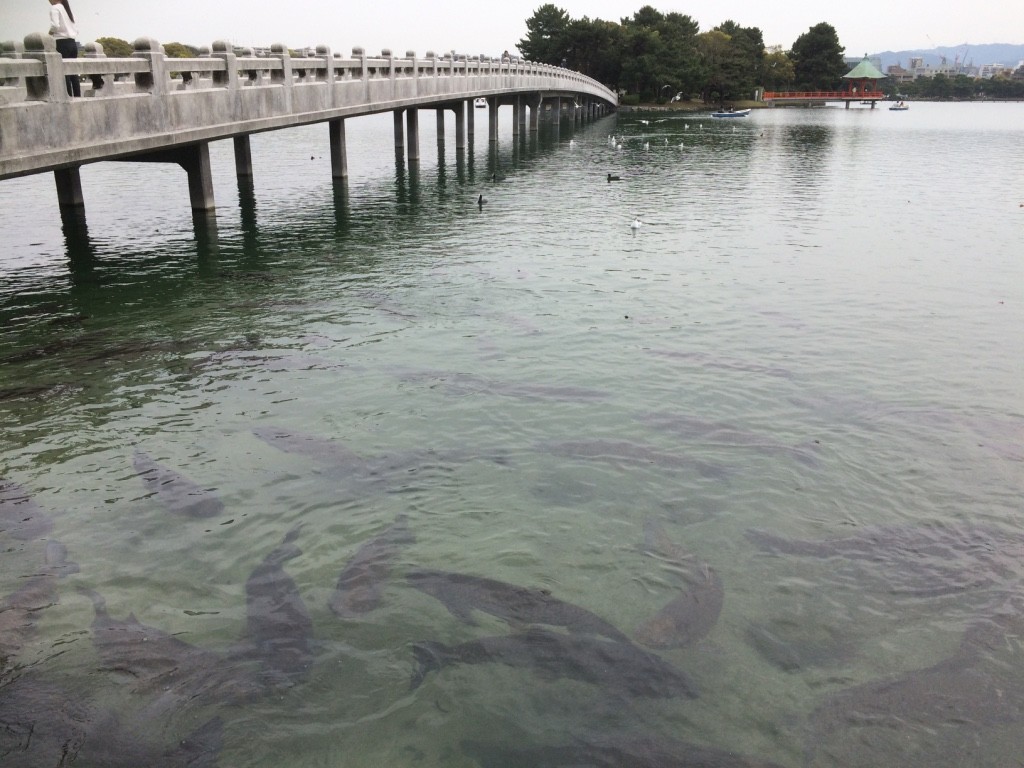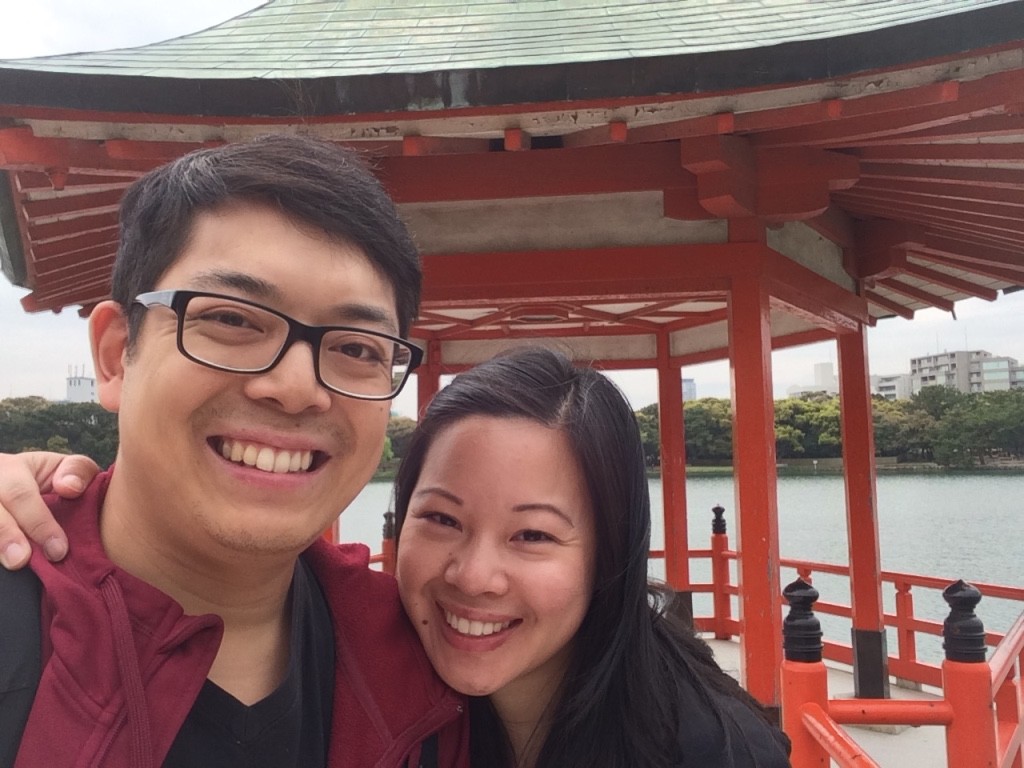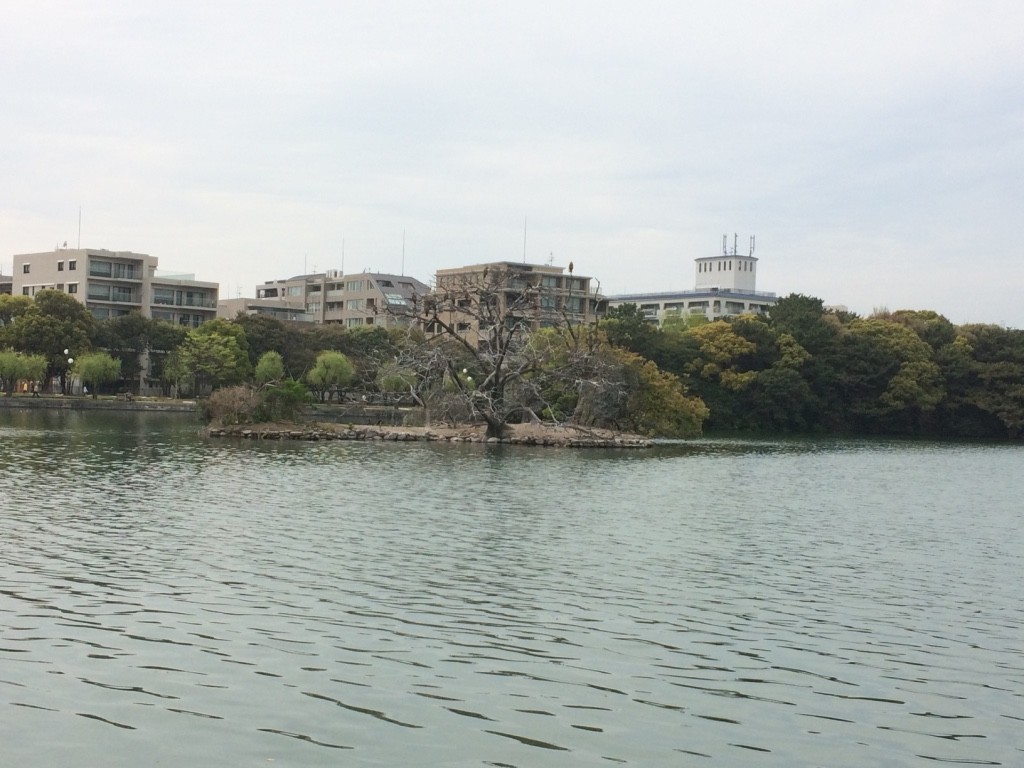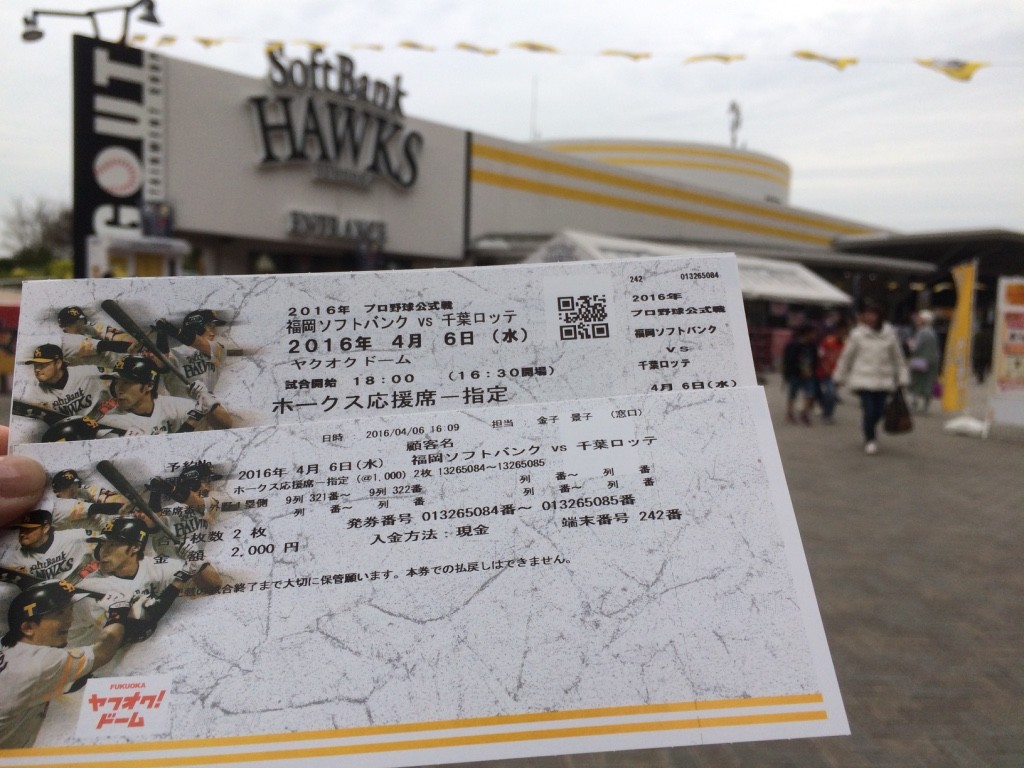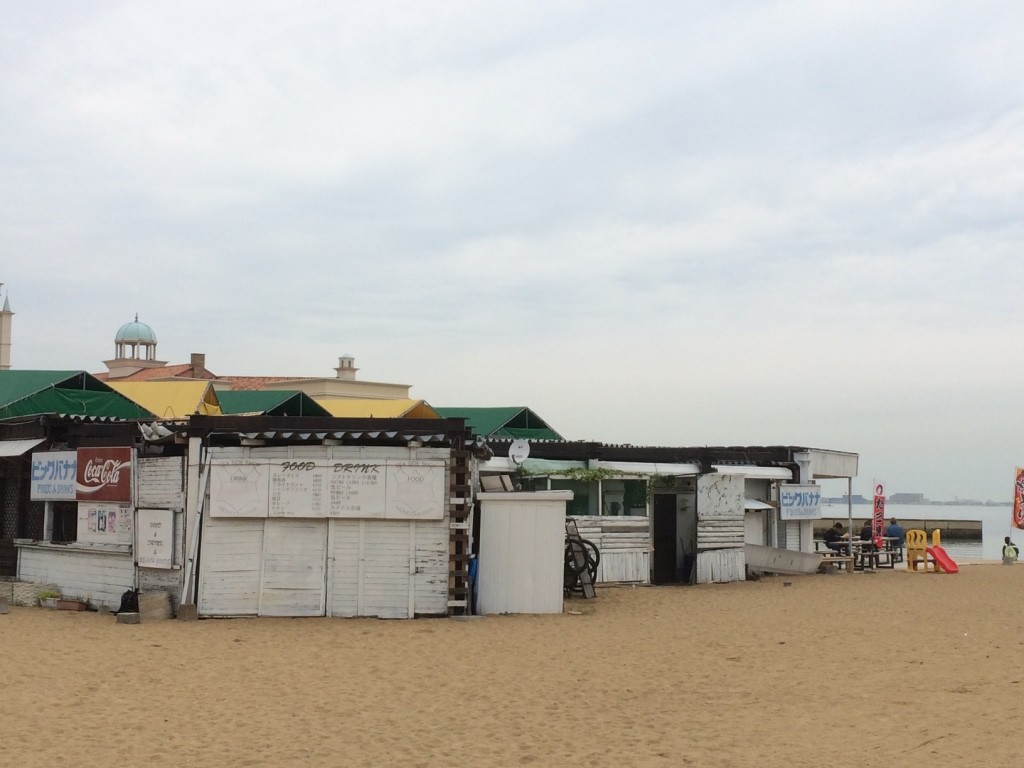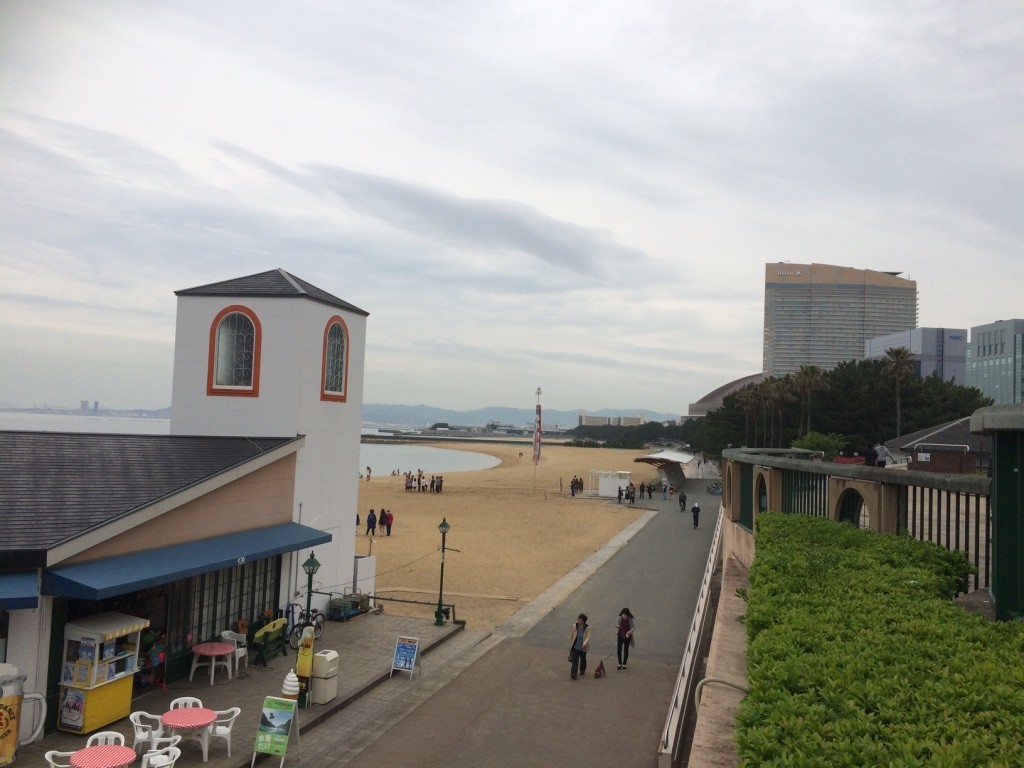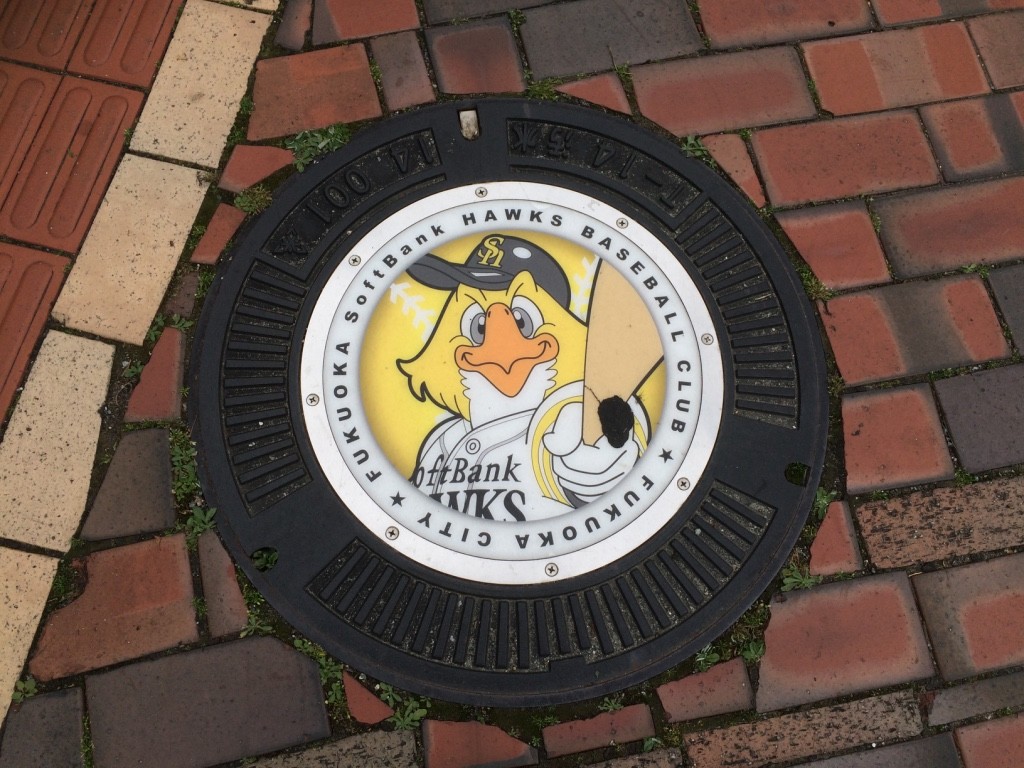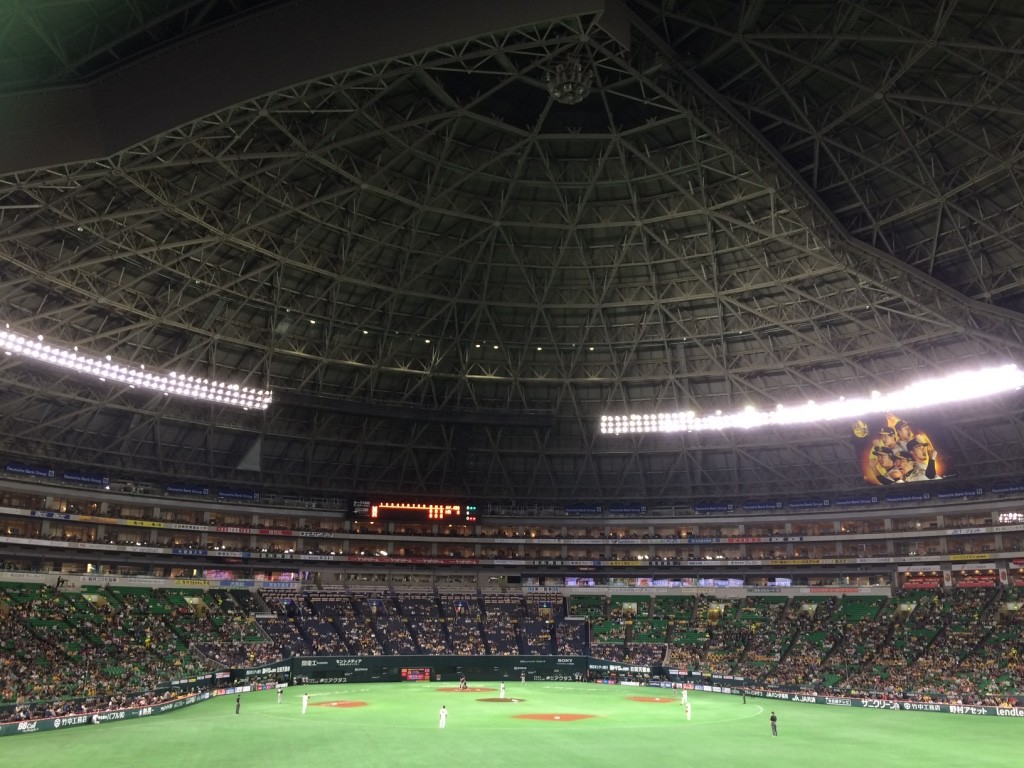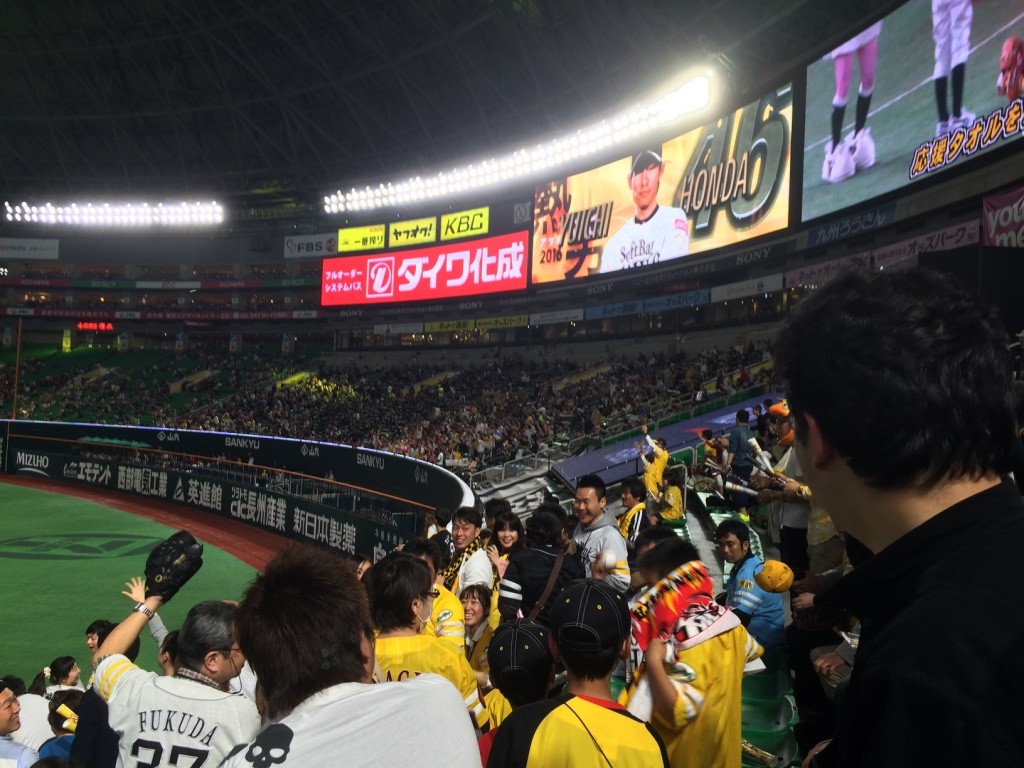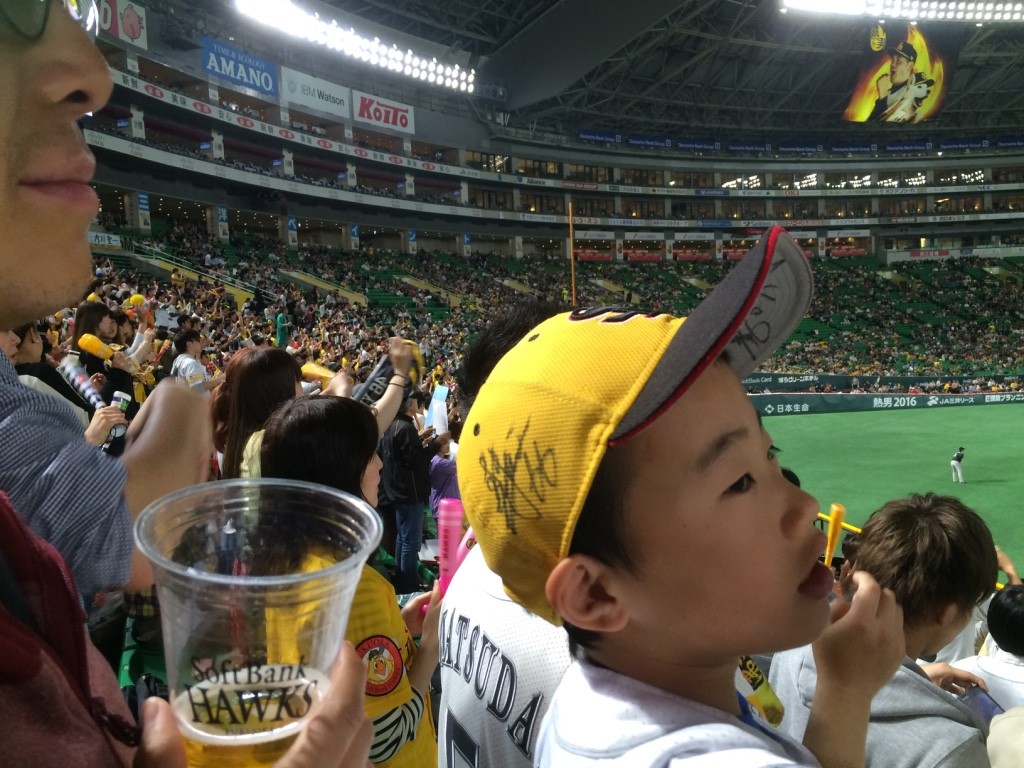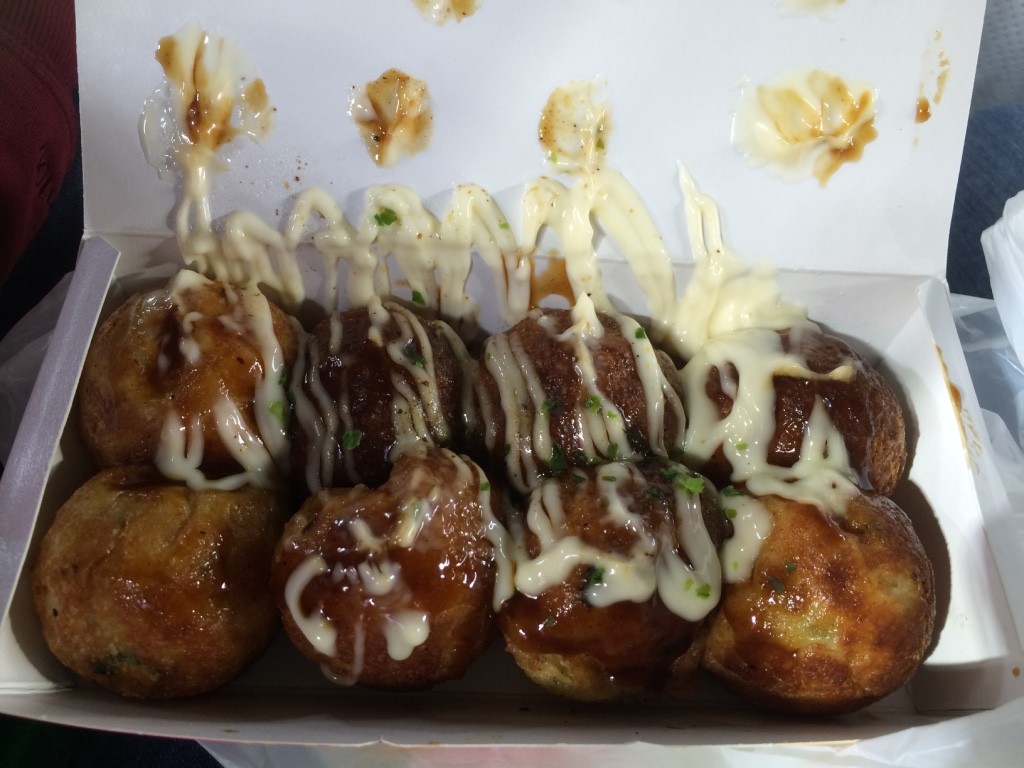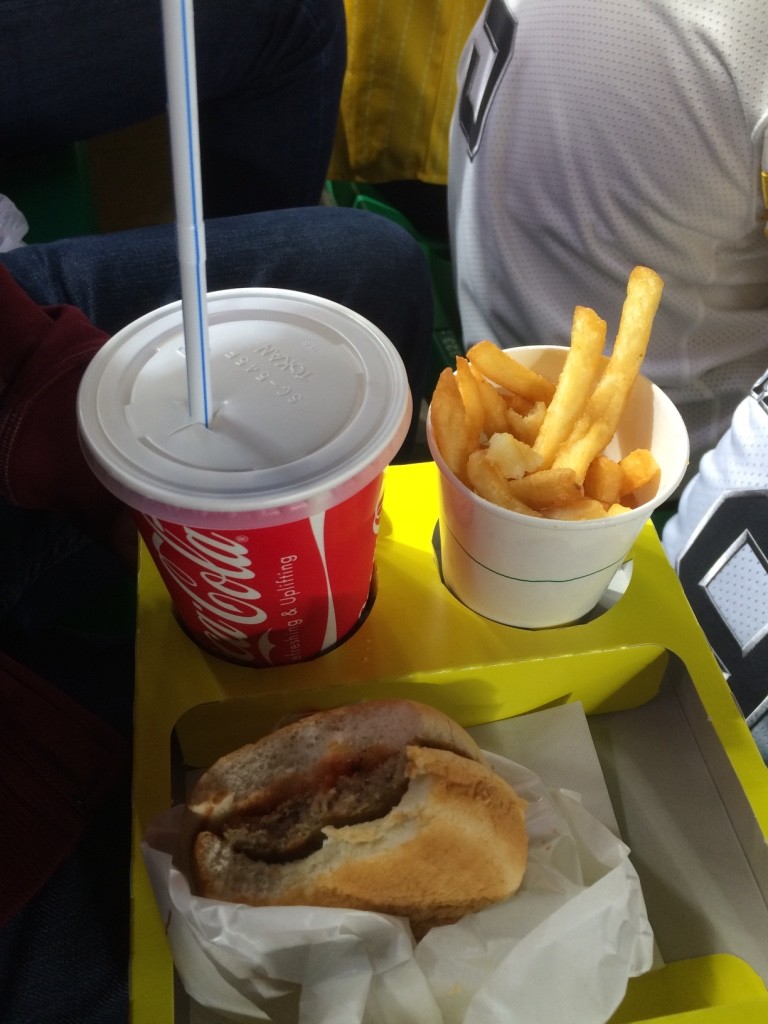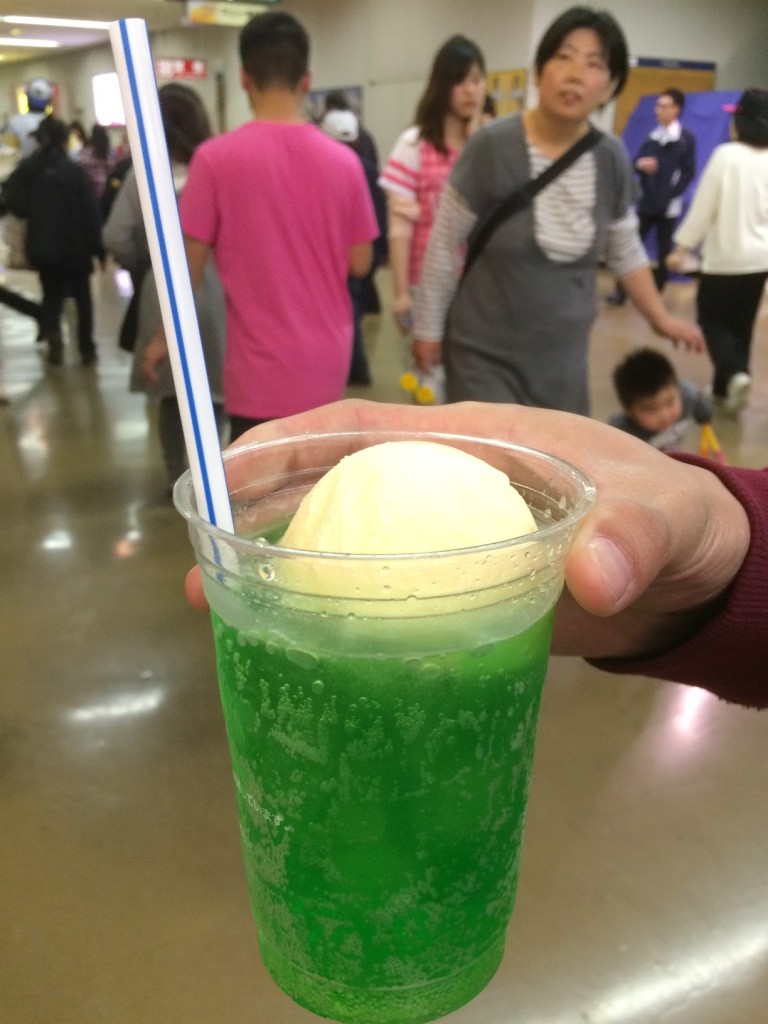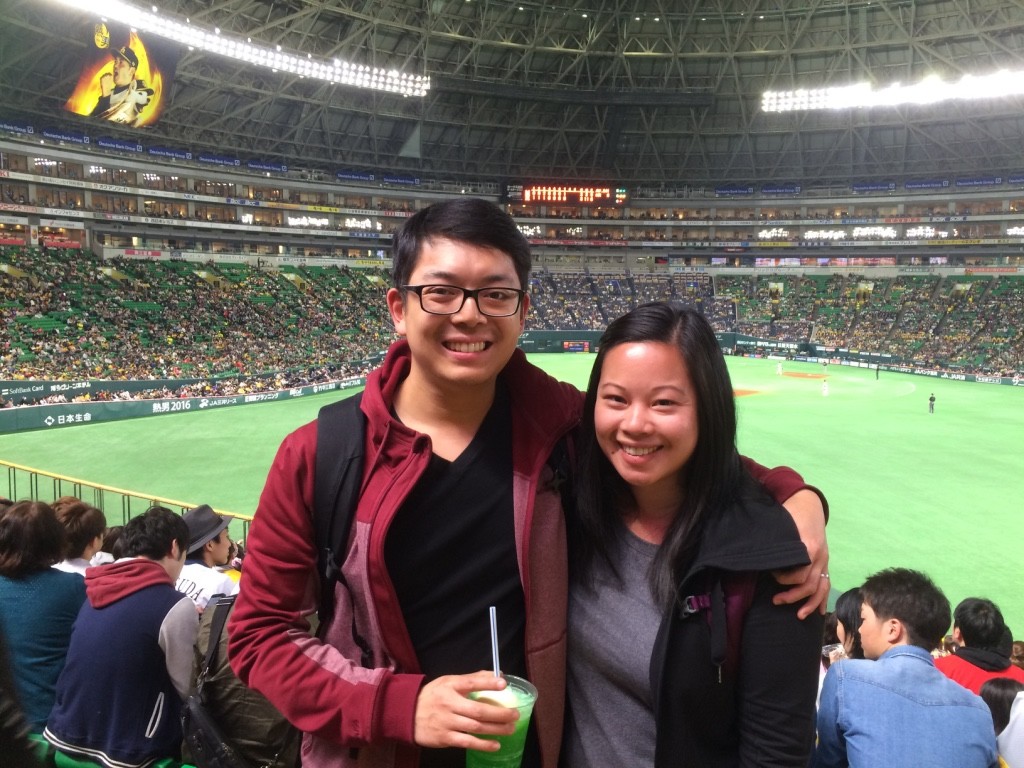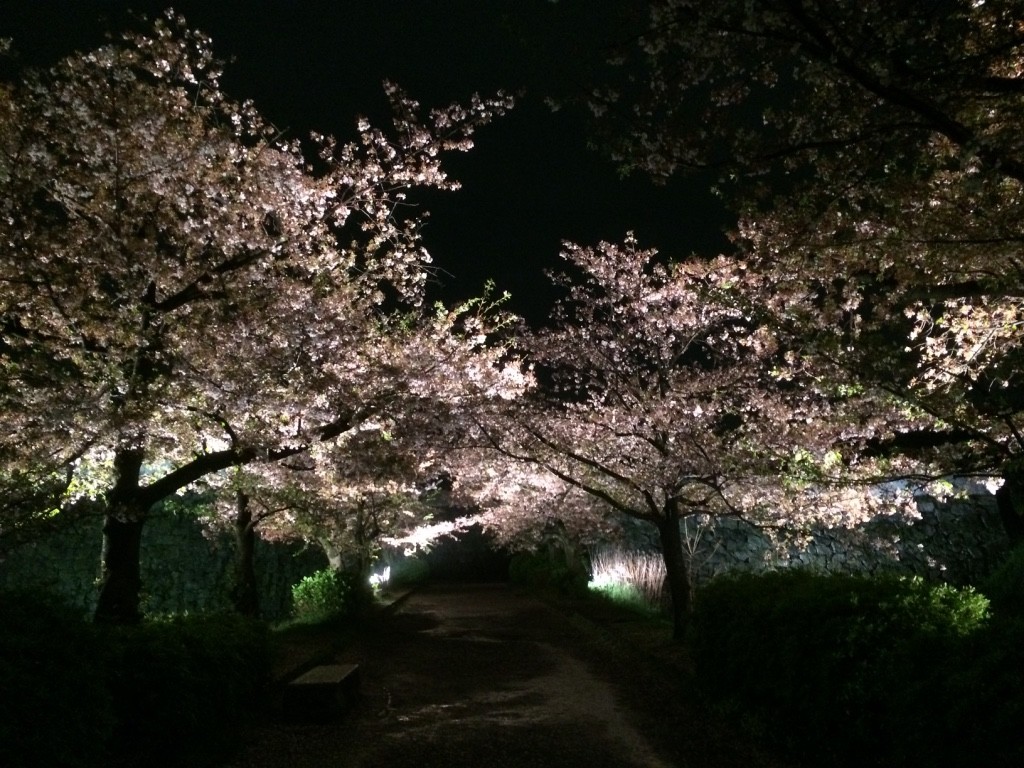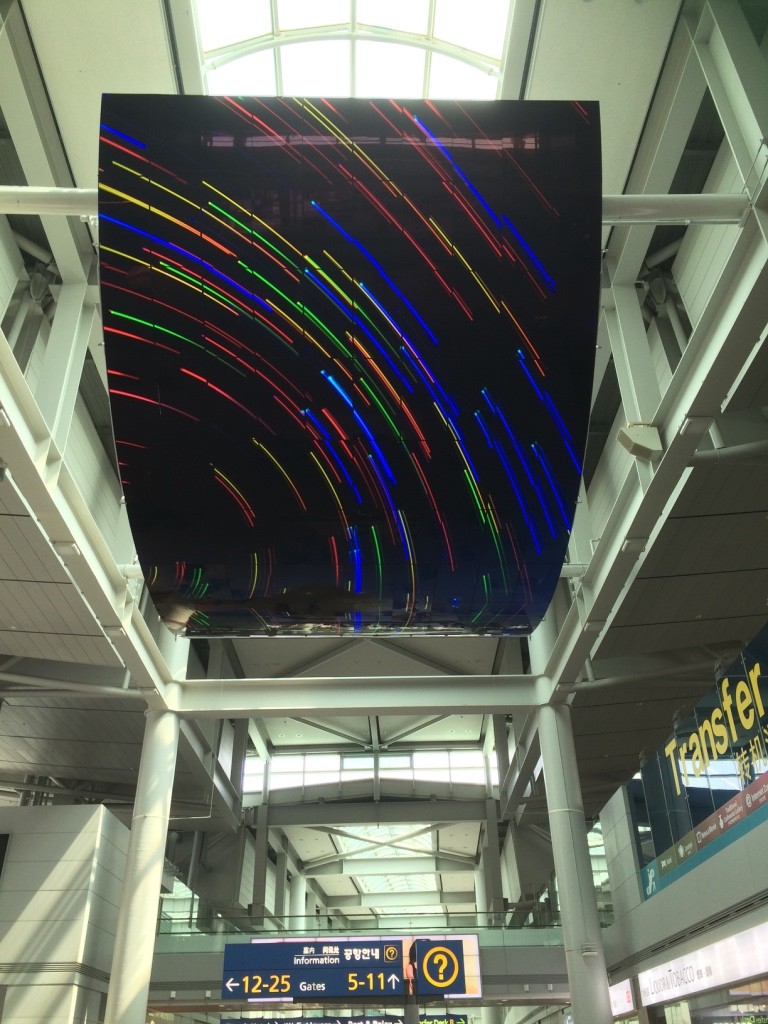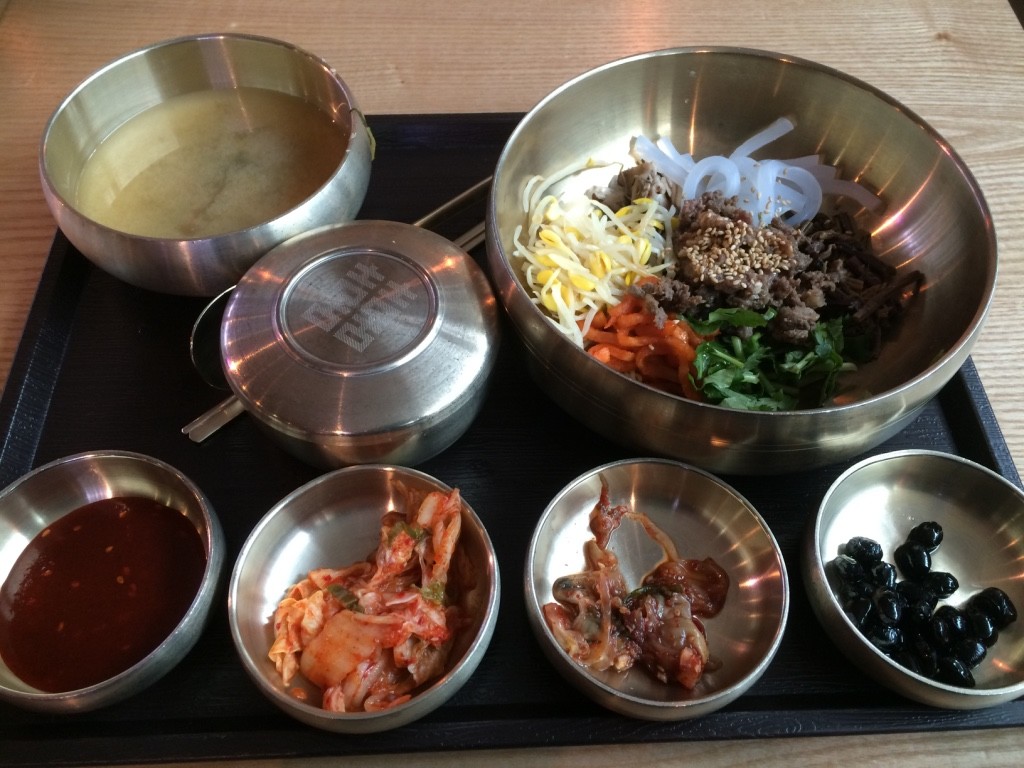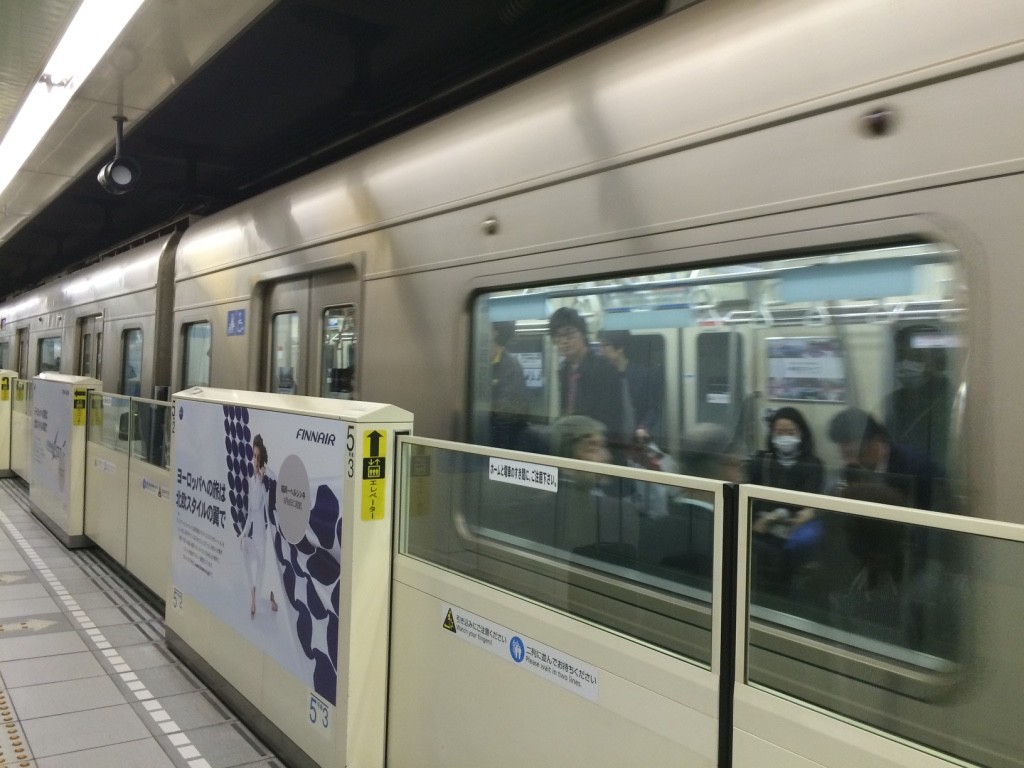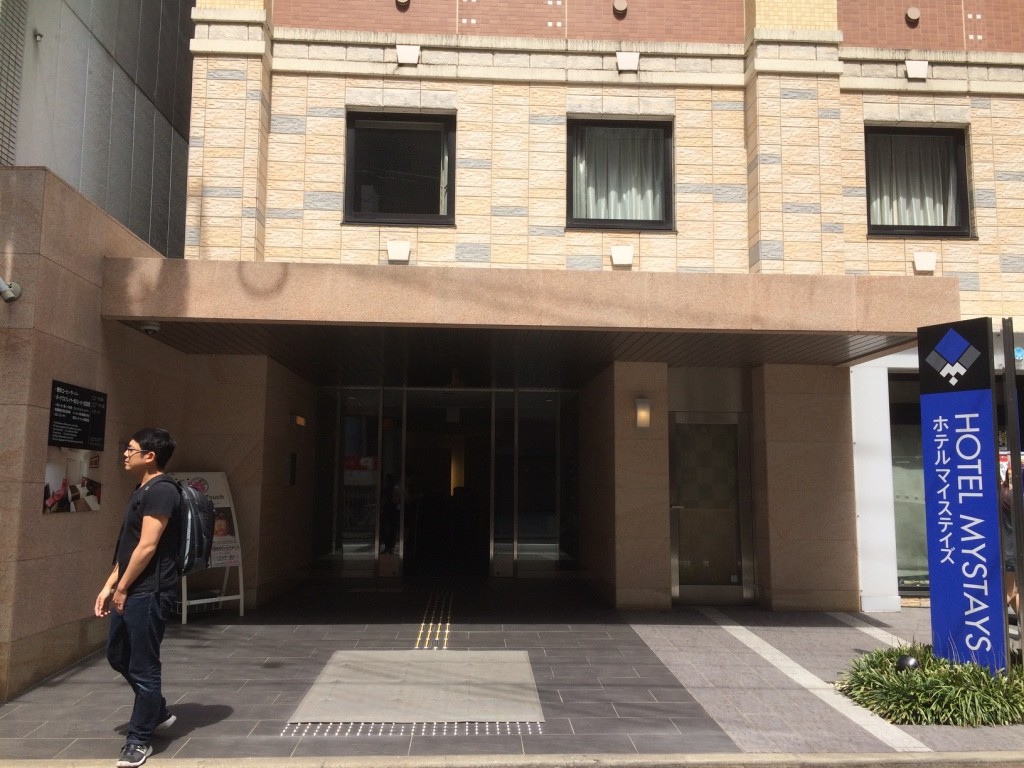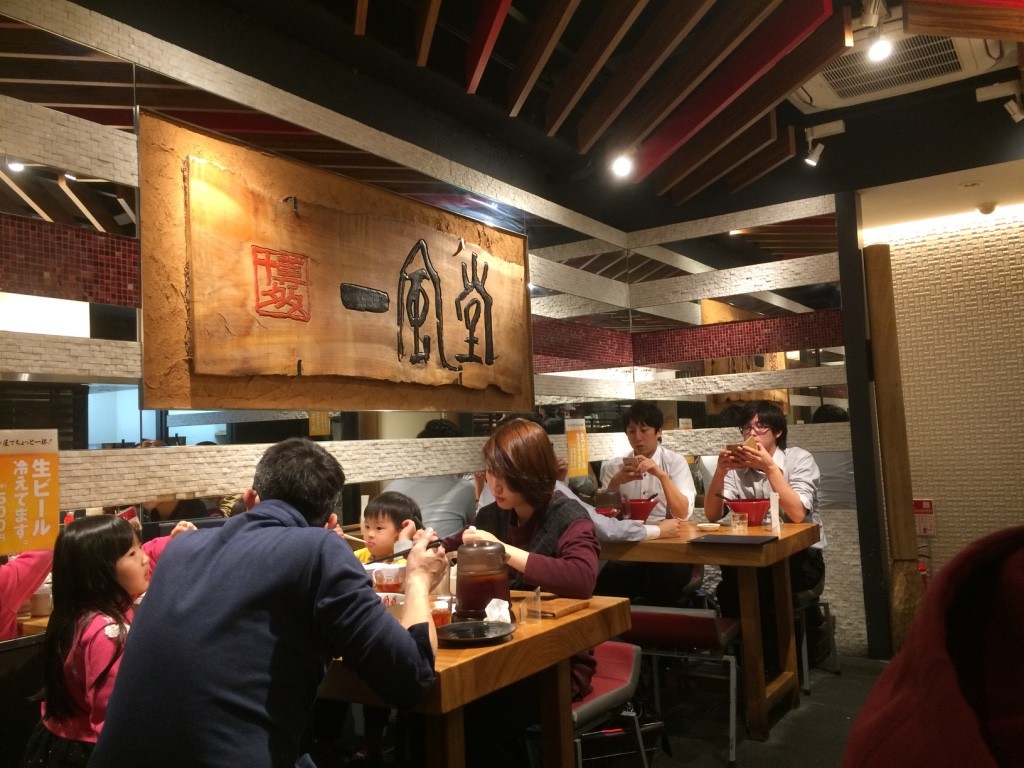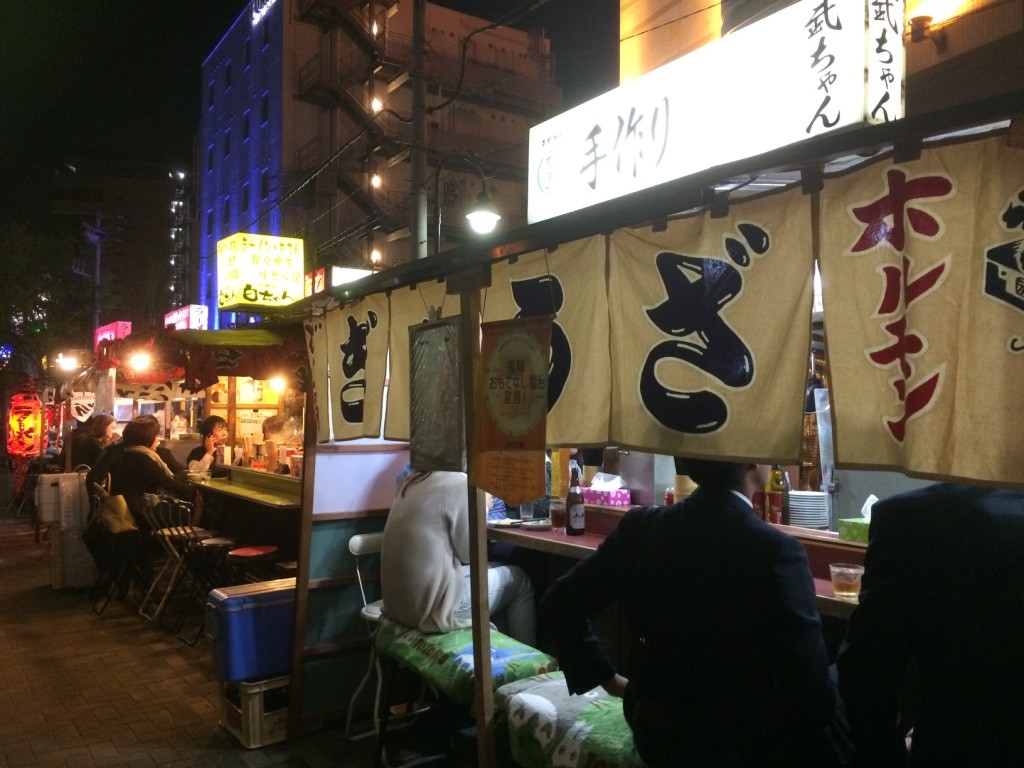April 8, 2016
Today, we caught the train at 9:21am from Hakata Station for Beppu Station and planned on spending the day there. We reserved seats for a train back to Fukuoka at 8:20pm. Beppu is a small town (with a population of ~120,000 people) east of Fukuoka in the Oita Prefecture. It’s known as the onsen capital of Japan with over 2,000 hot springs.
The JR train we took there wasn’t a high speed train so it took about 2 hours (145km away). Tim had downloaded Hockey Wives so we watched that on the train ride and then I slept for the remaining hour. The train we were on was interesting as half way through the ride, we had to turn our chairs around and face the other way (Tim: This happens on trains when the tracks look like “Y”, with the station at the bottom and the incoming and outgoing tracks at the top).


When we arrived at Beppu Station, we went to the information desk to find out more about the Jigokus (known as “Hells”) and onsens (hot spring spas) in the area. We ended up buying a one day bus pass and entrance to all 8 Jigokus for 5,200 JPY = $62.50 ($31.25 CAD/person) for both of us (we got a slight discount for having a JR pass).
We caught the 41 bus to take from Beppu Station up the mountain to an area called Kannawa. Kannawa is home to 6 out of the 8 Jigokus. Each Jigoku is unique in their own way. Going through them all was quite interesting (although some were a lot more interesting than others).
Umi Jigoku
This was the first and my favourite out of the jigokus. This one is called “Sea Hell” in English as the hot spring has a cobalt blue colour, which makes the water look really beautiful. You could feel the hot steam coming from the Jigoku when you passed by, the water is about 98 degrees Celsius and there’s even a bucket of eggs being cooked. Most of the Jigokus sold spring boiled or steamed eggs for around 70 JPY =$0.84 CAD (60 JPY =$0.72 CAD on the street).
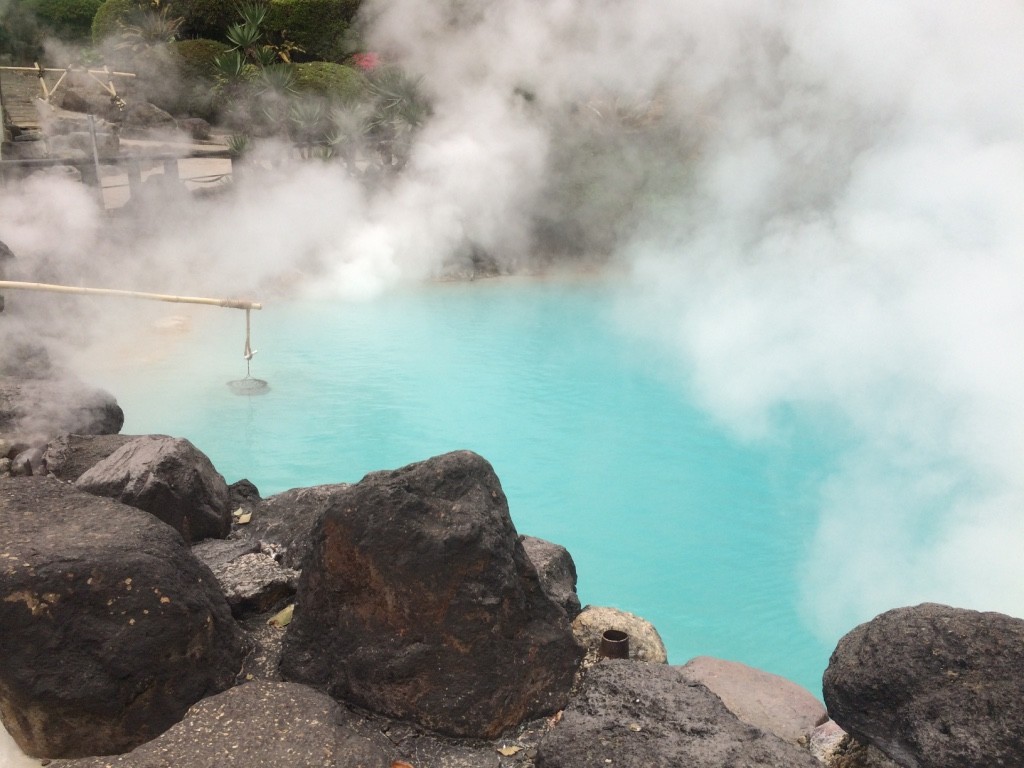

As we walked around the beautifully landscaped grounds, we saw a sign for a “leg bath”. We walked over and saw people dipping their feet and legs in a small pool. We joined in and it was really nice and relaxing. The water was very hot and you can tell how far the water came up to our legs as there was a clear white and red distinction. After we dried off, and put our socks and runners back on, our feet felt super comfy and like we were walking on air.
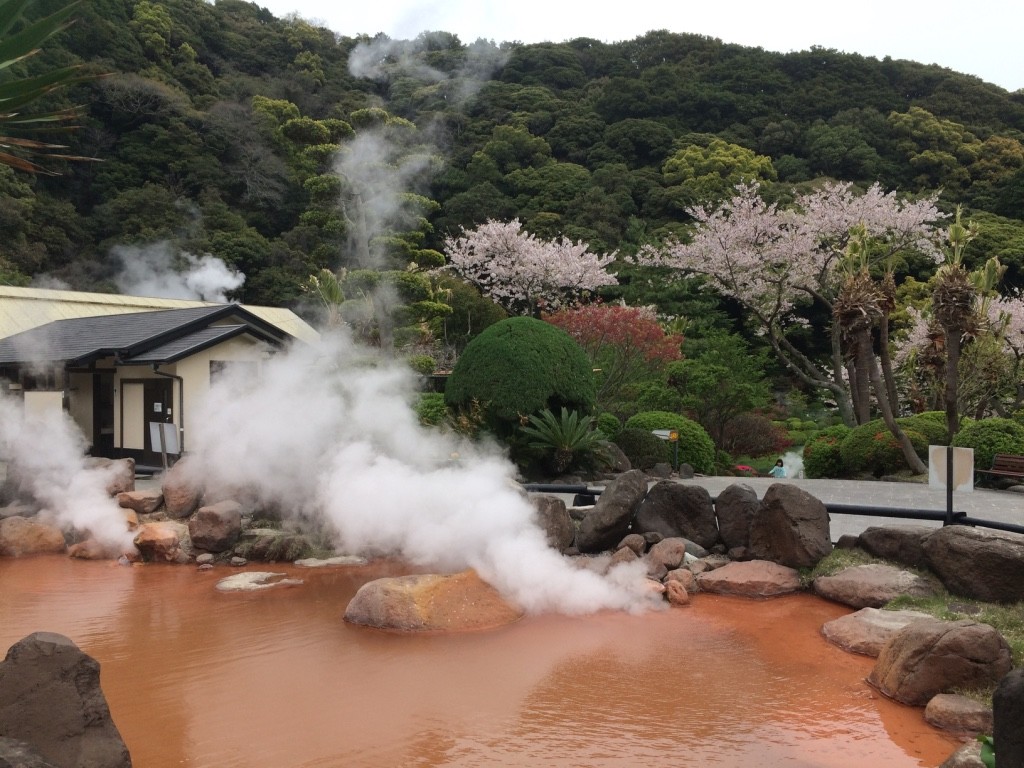
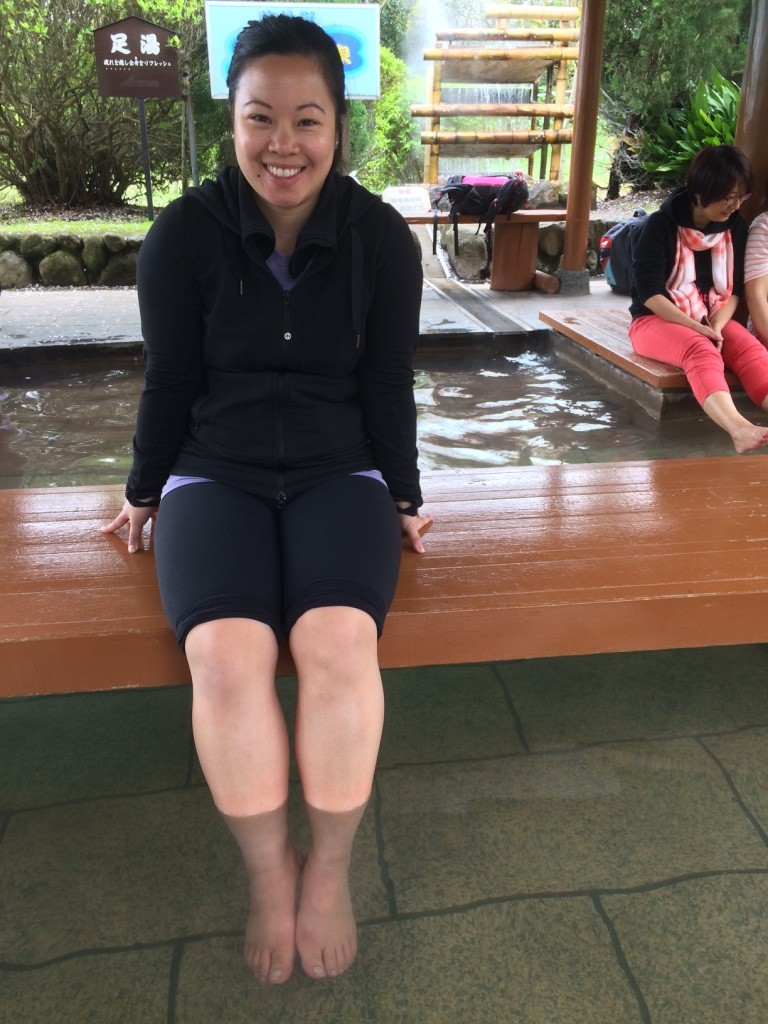
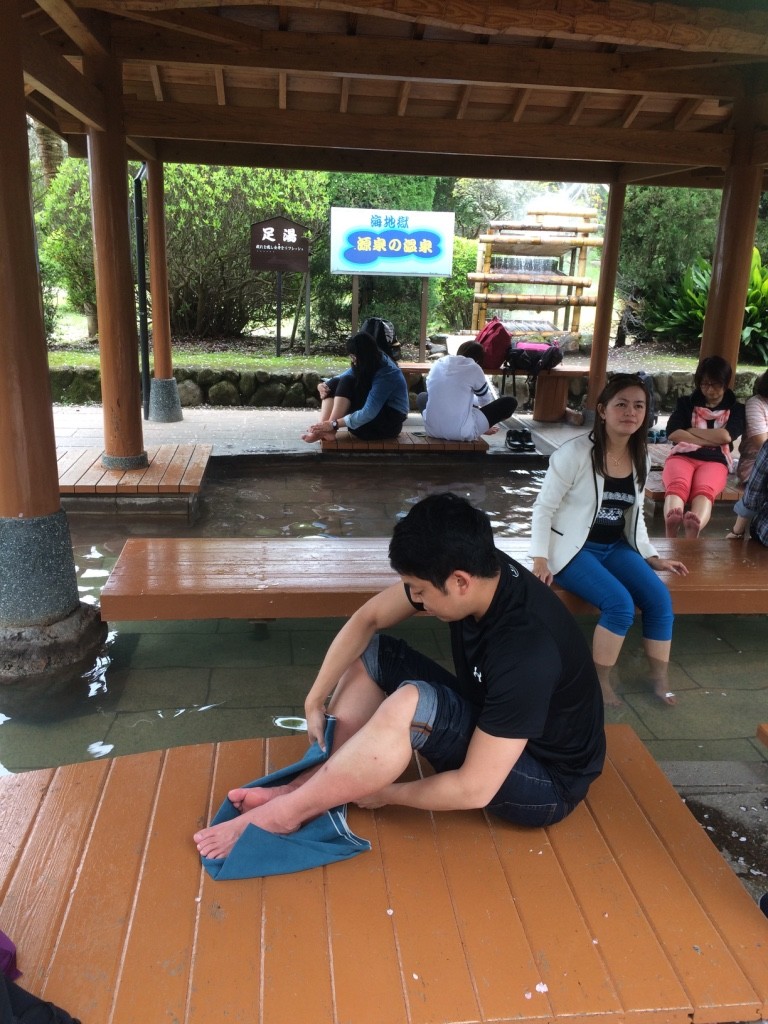
Onnishibozu Jigoku
The second Jigoku is named after mud bubbles. This one was neat but wasn’t as spectacular as the Umi Jigoku. I felt like they got less exciting as we continued on.
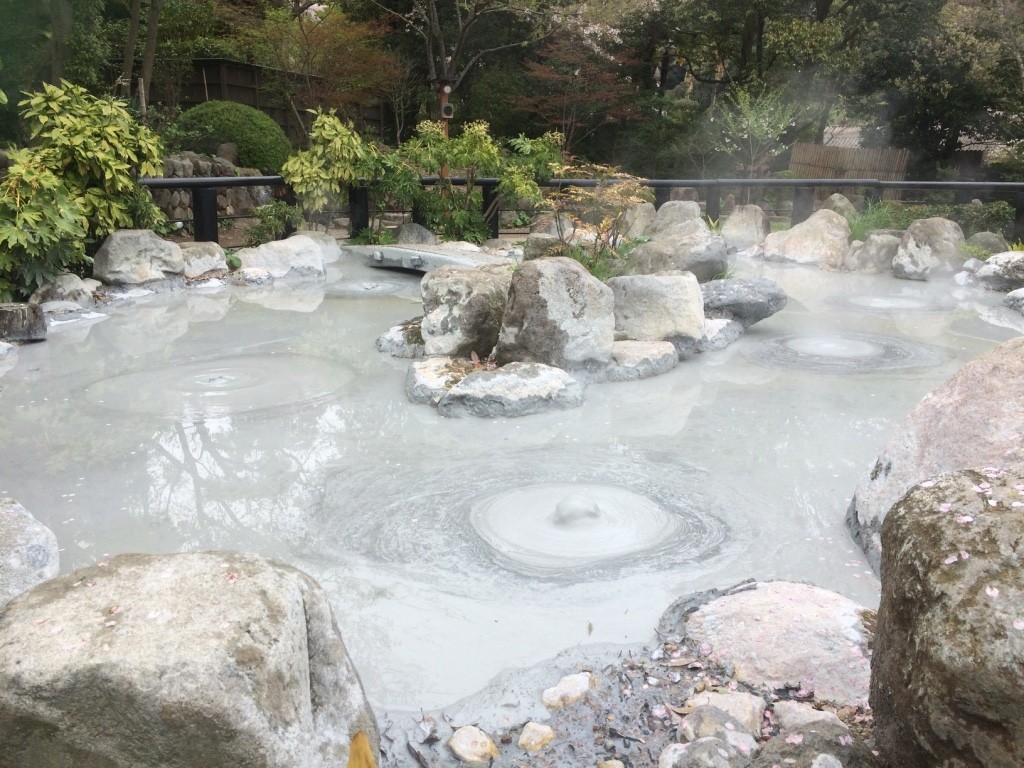
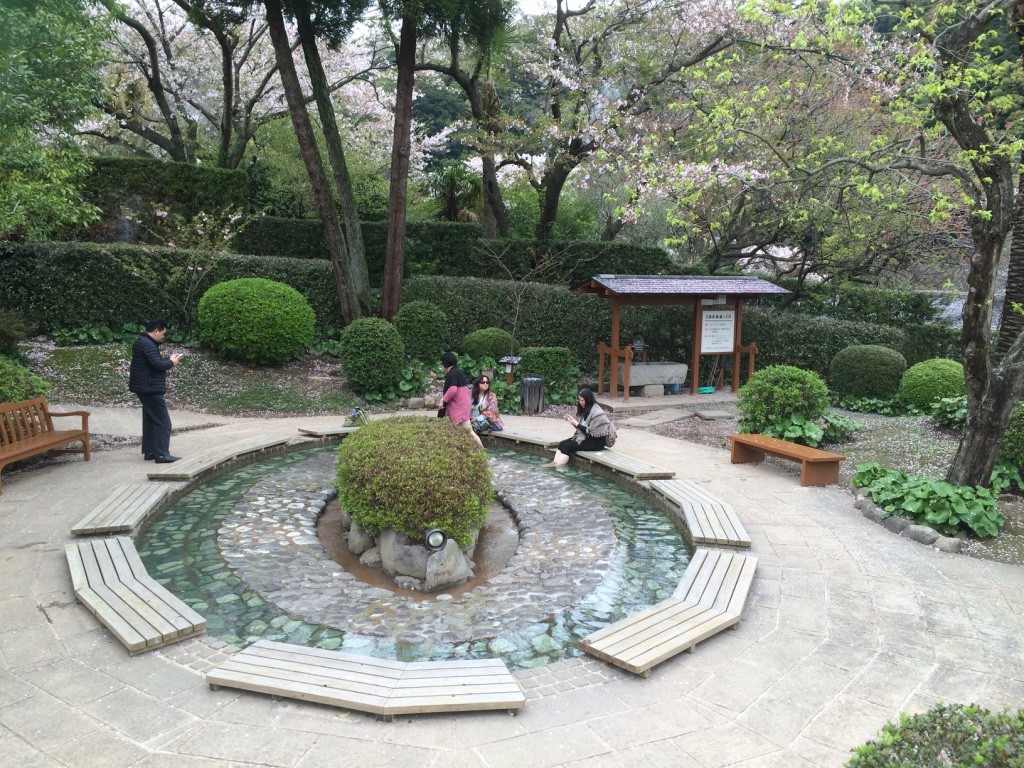

Yama Jigoku
The third Jigoku was called the Mountain Hell as the hot spring was against a mountain. This was probably my least favourite out of the 8 Jigokus. You could tell that this Jigoku had to make up for it’s lacklustre display as they had some animals like hippos, peacocks, flamingos, Japanese monkeys and rabbits in fairly small cages on display along with the hot spring.

Kamado Jigoku
The next Jigoku we went to was “Cooking Pot Hell”. This Jigoku wasn’t very fun to visit because there were two Korean tour buses there at the same time so it was unusually loud and the foot bath was packed! The boiling hot spring water was used to steam eggs, steam buns and custard pudding. We tried the eggs here – they had a distinct taste and were actually quite good.


Oniyama Jigoku
This jigoku is called “Mountain Monster Hell”. The monsters are crocodiles. The hot spring water is used to breed crocodiles in Beppu – there are about 80 crocodiles at this Jigoku in cages.

After visiting the first 5 jigokus, we were getting hungry. There were a couple of restaurants down the block so we decided to give one of them a try. I like how Japanese restaurants have plastic food to display their menu, it makes it much easier, especially if they don’t have an English menu. The restaurant we picked was run by (or what looked like) a husband and wife in their 70’s-80’s and their 40 year old son. The husband was manning his stall outside selling steamed eggs and yams while the wife and son were inside in the kitchen. But when the son had to step out for a bit, the husband came inside to help out with customers while she cooked. I ordered a katsu don (pork cutlet and egg on rice) and Tim ordered katsu curry (his favourite!).
Considering this restaurant was in a very touristy location and there was only one other restaurant to compete with it on the block, our expectations weren’t that high, but at the same time, knowing the older lady was cooking was a good sign. When the food came, we were both super happy with everything.
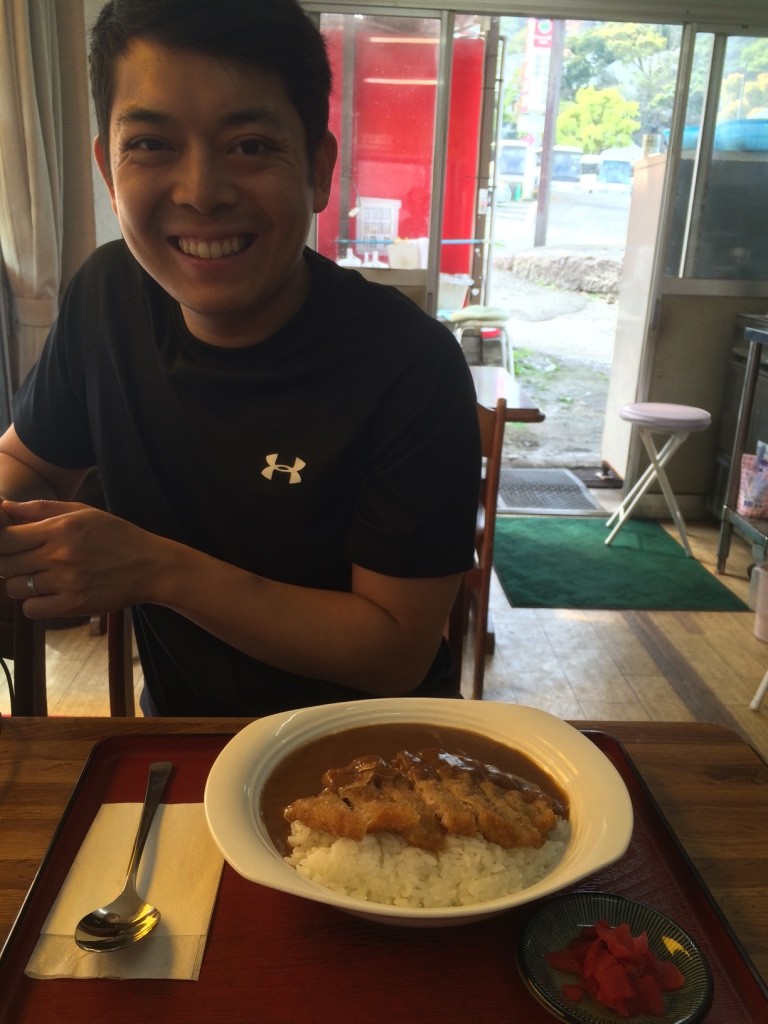


After lunch we went to visit the last Jigoku in Kannawa before taking a bus to go to the remaining two.
Shiraike Jigoku
This Jigoku is also called “White Pond Hell”. It was a very pretty Jigoku with a nice garden surrounding it. It also had aquariums (a bit run down) filled with piranhas and barracudas.

We rushed out of this one pretty quickly since the next bus to get to the other Jigokus was arriving soon and the next one wasn’t for another 40 minutes. We made our way to the next two Jigokus, which were a short bus ride away from the Kannawa area.
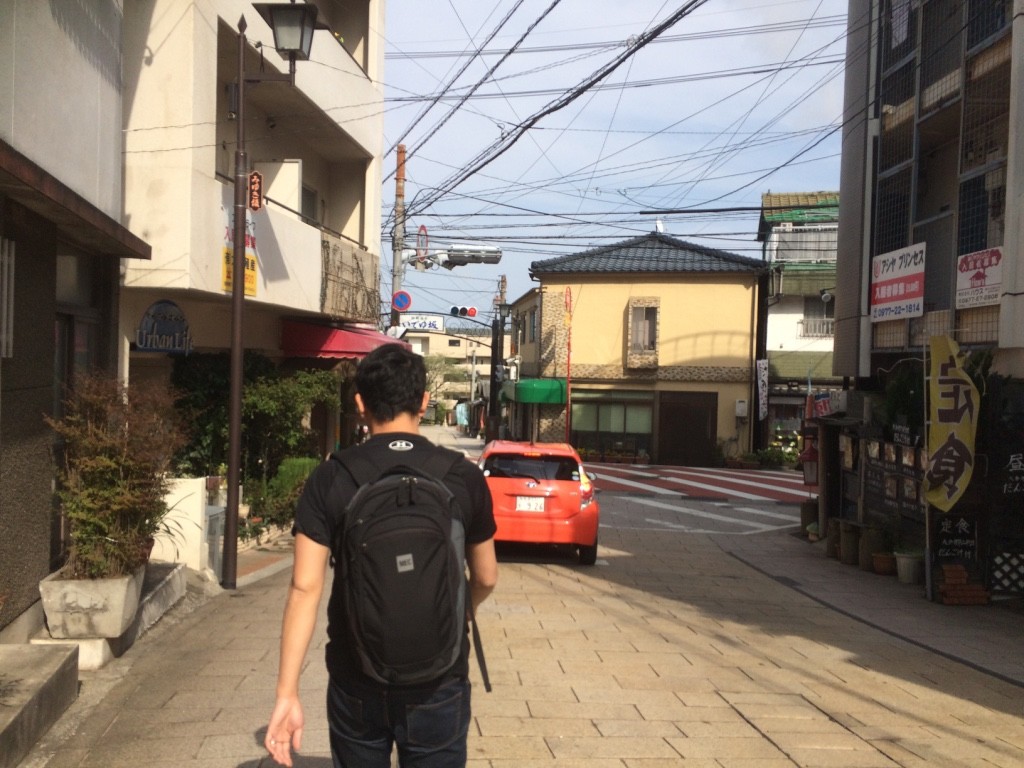
After about a 5 minute bus ride further up the mountain, we made it to the last two Jigokus. It was about 4:30pm and we also wanted to check out a traditional Japanese onsen before we had to leave Beppu. The problem with going to an onsen town is that there are a lot of options and with limited reviews in English online, it’s hard to pick. Luckily, the next Jigoku had free WiFi so we were able to do some last minute research.
Chinoike-Jigoku
This jigoku is also called “Blood Pond Hell” because the water looks red (more like a rust colour). This is the oldest of the Jigokus that we visited and also has the coolest waters at around 78 degrees celsius. The clay from this hot spring is used to treat skin disease and is sold here. I was pretty tempted to buy it but didn’t know if it was a gimmick or not (Tim: Unlike the products sold in (Korean) cosmetic stores which are definitely not gimmicks…). This was the last Jigoku we saw that had a foot bath (yay!) (Tim: Double-yay!!).

Tatsumaki-Jigoku
The last jigoku is called “Tornado Hell” because it’s a geyser, not a pond/pool like all the others. The geyser erupts every 30-35 minutes, which is very frequent in comparison to Yellowstone’s “Old Faithful”. They built an enclosure so the water wouldn’t spray everywhere since there are buildings all around. It would’ve been cool if they didn’t have it so we could see how high it would shoot up (Tim: Apparently the signs said without the enclosure, it would go up around 30m).
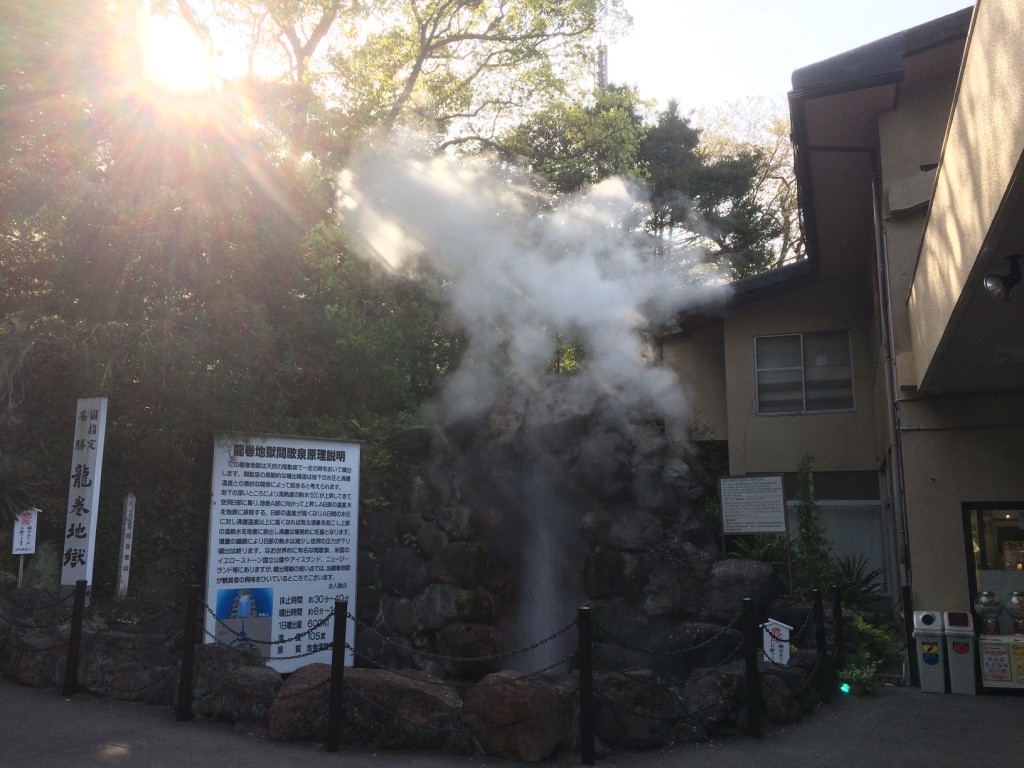
While waiting for the geyser to erupt, we decided we would to go to a public onsen called Hyotan Onsen. I had seen it on a list of recommended public onsens and the reviews looked decent. Hyotan is located in Kannawa, close to where we were for the other 6 jigokus so we had to go back. We were keeping a close eye on the time because we knew we had to be back at the train station by 8:20pm.
After getting a tad lost while walking to Hyotan (Tim: Dear Map Makers, if you’re not going to point North in the “Up” direction, then please include a frickin’ compass! Oh! And scales would be nice.), we made it there around 5:20pm. We noticed there was a tour bus outside but luckily, the Korean ladies were all leaving. When we arrived inside, we had to take off our shoes and put it in a locker. Similar to Ichiran, there is a ticketing system to pay. We decided to try the sand bath (which are more unique) and go into the public baths.




That’s pretty much all the pictures I have. We aren’t allowed to take our cameras in to the sand bath area or the public baths (for obvious reasons). The sand bath was the only area where Tim and I could be together. We both got changed into our yukatas (we forgot about taking pictures) and headed into the sand bath area.
The sand bath was interesting. There are different areas based on how hot you want your sand to be. We picked the medium sand and started to dig our hole. Once I had a shallow hole dug, Tim shovelled hot sand on to me, covering my whole body except my face and toes. It felt really heavy and hot. You’re supposed to stay under the sand until you’re sweating or as long as you want. Since I was already under the sand, Tim had to shovel sand on himself. He was sweating a lot already from having to shovel sand on me in a sauna-like room. Once I had enough, I shoved sand on to Tim’s arm and put more on top of him. It was an interesting experience, we both said we probably wouldn’t do it again though.
After the sand bath we both went our separate ways into the segregated baths. At first I was a bit shy about being naked around other ladies but looking around, no one cared so I didn’t either (Tim: I had a similar experience. I went from hesitant about the concept to strutting around sans towel in about 10 seconds). When I walked into the bath area, there is an indoor area with several different baths and some massage waterfall fountains, but before you go into the baths, you have to wash up. There is a bathing area with around 20 stations with a mirror, shampoo and soap, and a shower head. You sit down on stools and bath yourself before you go in (Tim: I sprayed and soaped down my stool first). I think we got there at a really good time because there weren’t that many people in the baths, which made it really relaxing. The pools were quite hot, so I wasn’t able to stay in each of them for that long. After checking out all the different indoor pools I went outside. I enjoyed the outdoor one the most, it had a waterfall coming down and rocks all around (Tim: What!? The Men’s side didn’t have a waterfall!). The sun was setting as well, so it was nice and peaceful. It was great for me because there was no one outside when I went, so I was able to enjoy some time to myself for about 15 minutes. There is also a steam room to go to, I went in for about 2 minutes and then I left and sprayed my face with cold water at one of the washing stations (probably not supposed to do that).
(Tim: I spent some time with the waterfall massage fountains. There were about 15 “stations” and when I went in, there were two people already inside. They both looked like they were perhaps in their 60s. One was doing pushups under a waterfall, the other was in a prone position letting the water hit his back. The both were stretched out so that 2-3 waterfalls were hitting them. I started upright, but soon decided to do as the locals do. After one pushup… I decided to follow the other guy instead and I lay prone and let the water work my lower back.)
We spent about 45 to an hour in the baths and came out pretty refreshed. Tim came out of the men’s bath with a huge smile on his face. He enjoyed his “Tim time”. Overall, we were both really happy with Hyotan and our first onsen experience was a success. (Tim: I’m definitely on board the onsen train now).
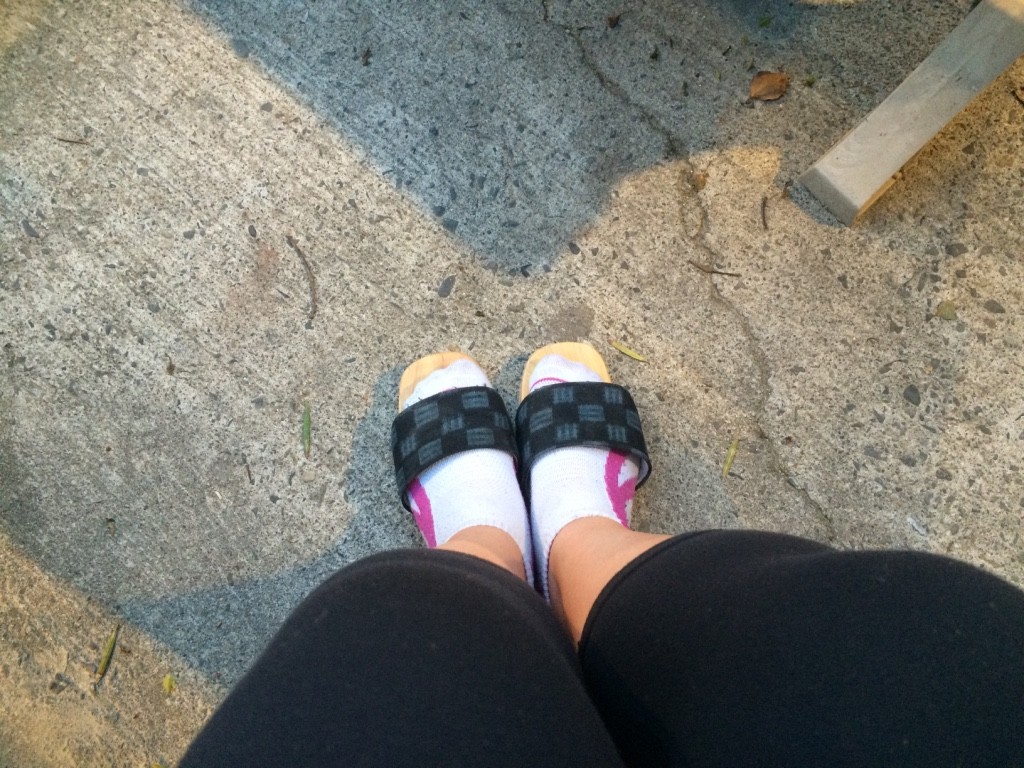
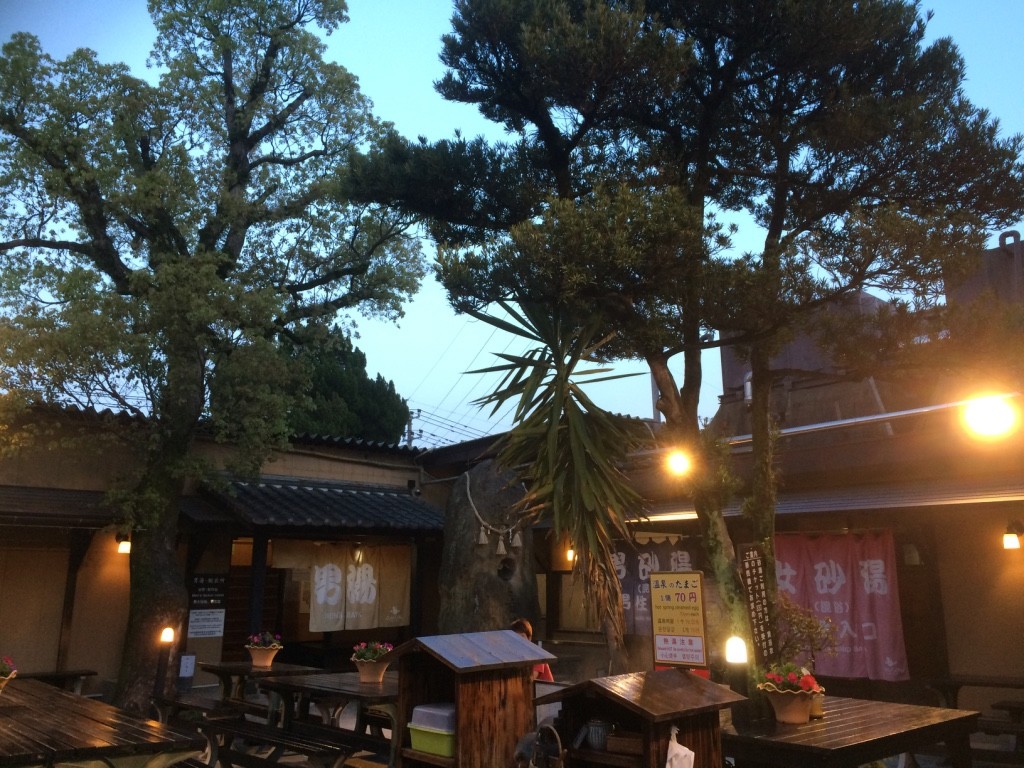


After feeling relaxed and rejuvenated we made our way back to Beppu Station. We caught a bus, which took about 15-20 minutes to get back to the train station. It was about 7:45pm, so we needed to find a quick bite to eat. There wasn’t much selection around Beppu’s train station and the restaurants inside the station closed at 8pm. We decided to go to Lotteria, which is a Japanese fast food chain.
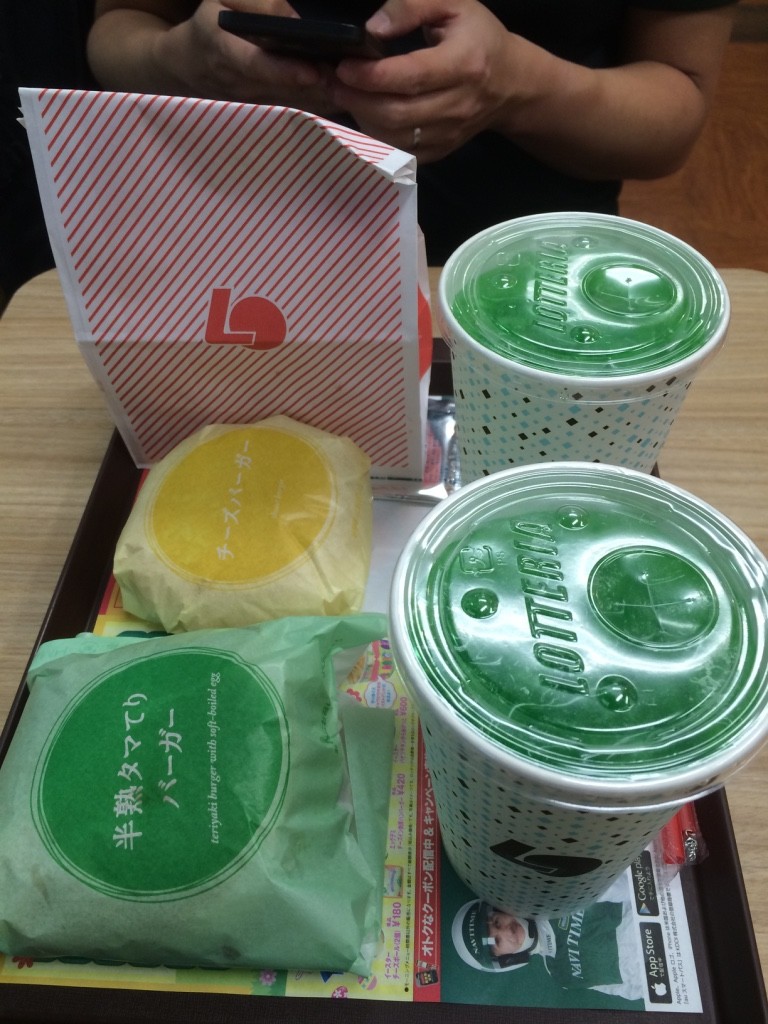
On the train ride back to Fukuoka, we watched Masterchef Canada together and I fell asleep (as usual). We got back to our hotel around 11pm. It was a long day but a great one. We both enjoyed Beppu and the slow pace of the day. We didn’t get any pictures but from the top of the hill on the bus, you could see all the steam coming out of houses and onsens – it’s quite amazing.
Steps for today: 14,200


